
























































































































We produce Digital Content for Digital People across 20+ Global Brands, reaching over 15M Executives
Digital Magazines






Websites
Newsletters
Industry Data & Demand Generation


Webinars: Creation & Promotion
White Papers & Research Reports
Lists: Top 10s & Top 100s
Events: Virtual & In-Person
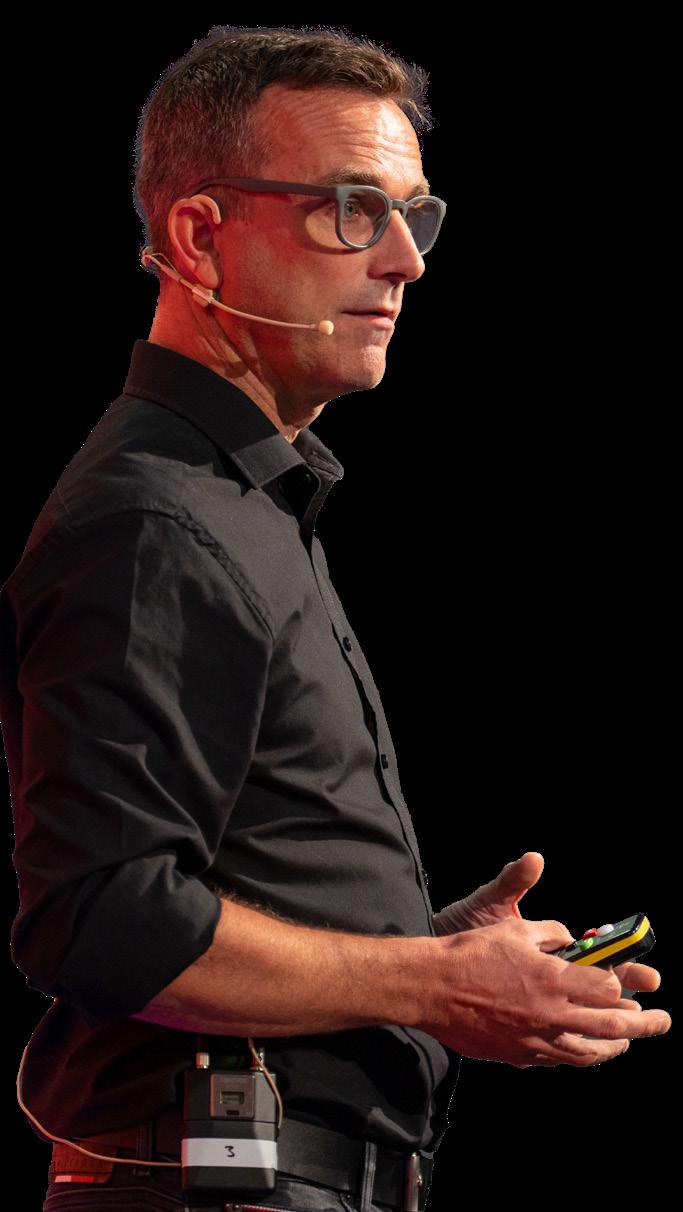



Work with us




In 10 or 20 years’ time, it’s entirely plausible that I’ll be dictating this editor’s letter to a virtual assistant through a VR headset. That’s if there’ll even be a need for me at all. Journalism is often touted as one profession that could be swiftly replaced by AI and automation

In this month’s edition of FinTech Magazine, we have two features examining the potential impact of the metaverse on financial services. First, we ask whether this new technology could offer banks an exciting new frontier. Then, we look at the rise of non-fungible tokens (NFTs), which to date have been mainly traded as digital artworks but could represent a lucrative new revenue stream for the global video game industry. Working in fintech every day, we are often guilty of being blind-sided by new technologies and losing sight of the broader perspective. There are roughly 1.5bn unbanked and underbanked people in the world today, largely in rural communities or developing countries. We ask what more can be done to engage those underserved populations in the financial system. It’s an important topic – what hope do we have of driving uptake in new technologies, like the metaverse, when so many people still lack access to a bank account?
So take a few minutes out, pour yourself a mug of something hot, and enjoy the May issue of FinTech Magazine!
ALEX
“HOW DO WE DRIVE UPTAKE OF NEW TECHNOLOGIES WHEN SO MANY ARE STILL EXCLUDED FROM THE FINANCIAL SYSTEM?”
14 BIG PICTURE Argentina’s economy hit by three-figure inflation

16 LIFETIME ACHIEVEMENT AWARD Chris Comparato CEO, Toast
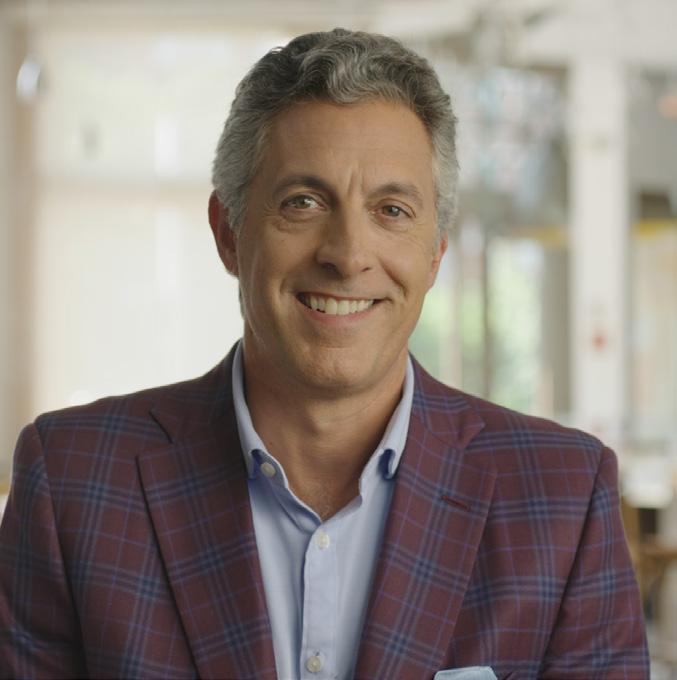

20 FIVE MINS WITH Hannah Lewis UK Country Manager, American Express





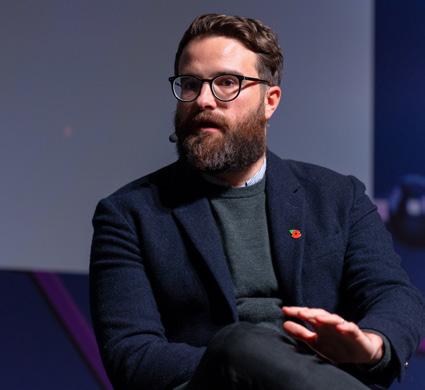
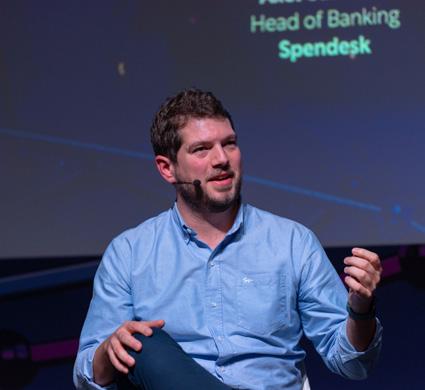






























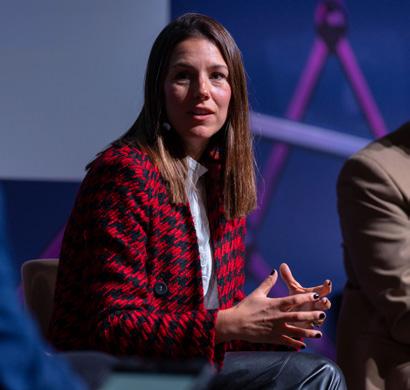


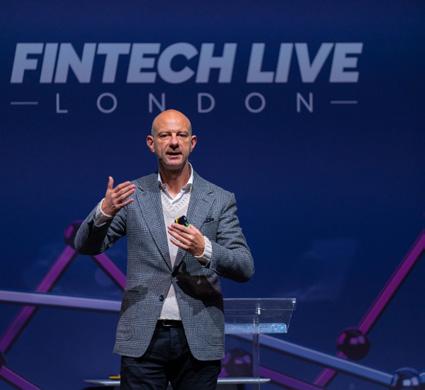






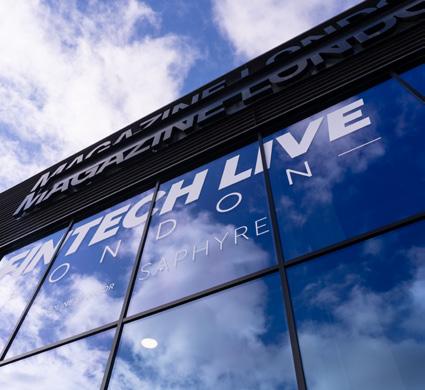

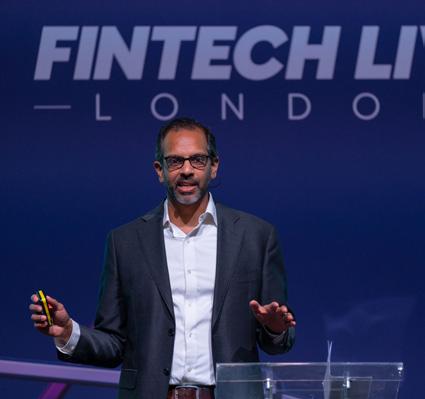


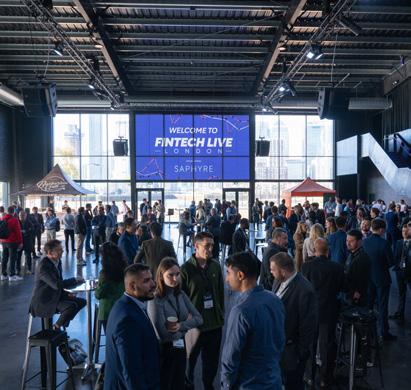


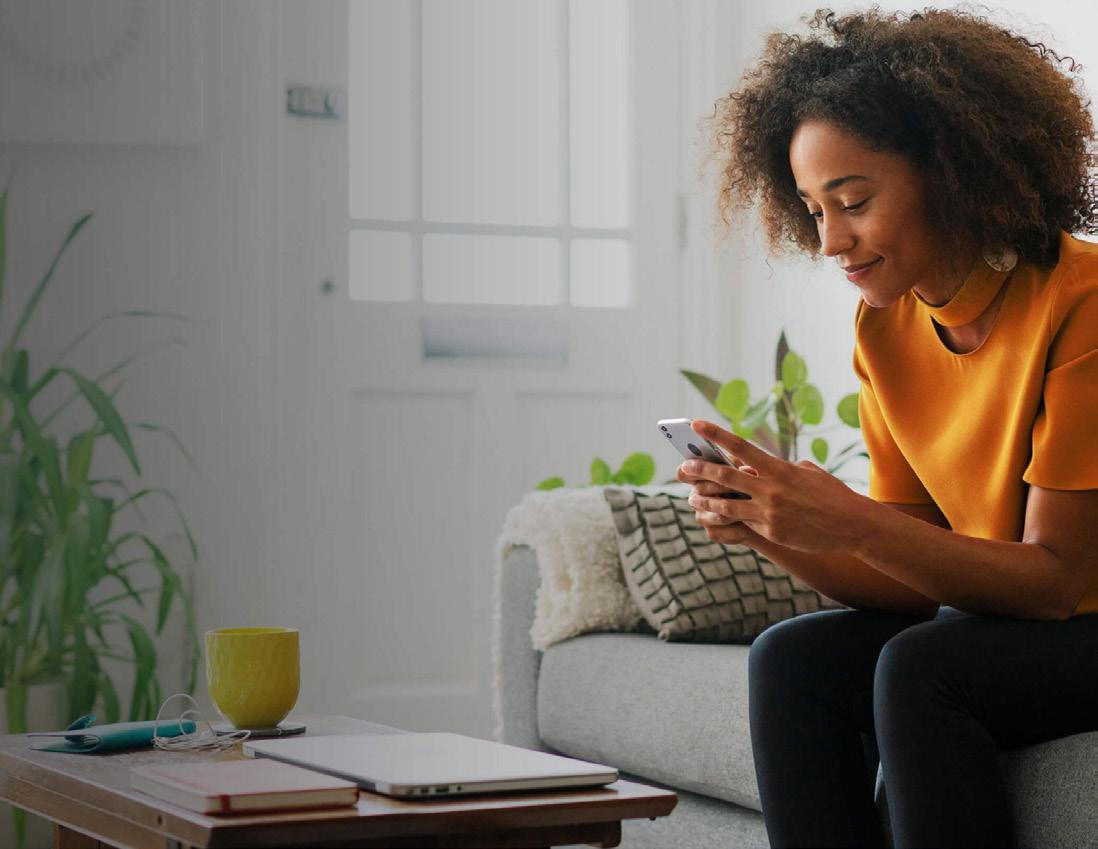



The Backbase Engagement Banking Platform is the evolution of digital banking.
Built for fast implementation and ease-of-use, the platform allows financial institutions to rapidly deploy digital solutions that delight customers and empower employees.
With the power of one platform, you can:
Engage your customers
Create tailored customer journeys from account signup to product up-sell
Empower your employees
A 360° view of your customer helps you deliver personalized and instant service
Ready to get the full picture?
Talk to our specialists
Leverage a composable architecture
Select best-of-breeds partners for your perfect end-to-end solution
Reduces overhead and drive greater innovation with our cloud model.

Start small, grow big Future-proof digital solutions can be customized to your needs now, then scaled later.
This advertisement can only scratch the surface of what the Backbase Engagement Banking Platform can do for your business, employees and customers.
Ready to get the full picture?
Function as an agile workforce to fast-track consumer innovation

Rows and rows of fully stacked shelves in a supermarket in Argentina. Consumer spending power is being seriously impacted by rising inflation, which in March topped 100% for the first time since 1991. Food and drink prices soared by nearly 10% in a single month, while popular cuts of meat were 30% more expensive. A severe drought affecting food crops is exacerbating the situation, leaving household budgets under severe strain. South America’s third most populated country has deep-seated and long-running issues with its economy, often described as being in “perpetual crisis” and where 40% of people live in poverty.


and off. Toast
If you lived on planet Earth during the pandemic – or any time since, for that matter – chances are you ordered in. With restaurants shuttered and social distancing rules in place, many of us took advantage of the speed and convenience of food delivery. It’s a growing trend and a market that’s expected to be worth as much as US$430bn globally by 2030.
Along with the rapid rise of digital payments, it is one of the consumer demands that is driving a technological revolution in the restaurant business. One company that is helping to serve restaurants and meet those needs is Boston-based Toast, which has been on an astronomical ascent since it was founded in 2011. The company has raised more than US$900mn in funding since the beginning of 2015 – during which time it has been led by one man.
Consumers are dining out more again Chris Comparato has an extensive background leading high-growth SaaS companies, which explains why he was such a good fit for the top job at Toast when he was appointed in February 2015. Before Toast, he led all customer success functions at Acquia and Endeca, as well as roles at consulting firms Keane and Cambridge Technology Partners.
When the COVID-19 pandemic hit, Toast was doing well. Revenue had increased by more than 100% yearon-year, and the firm had just raised US$400mn in its largest funding round
to date led by the likes of Bessemer Venture Partners and Tiger Global Management. It was a stern test – not just for Toast, but for its merchants too, who were already having to adapt rapidly to dining habits in constant flux.
“If you look at the course of the last two-and-a-half years, the restaurant industry has been incredibly resilient,” Comparato told CNBC earlier this year. “We're making sure that our merchants and restaurants are ready to adapt and be resilient. Restaurants continue to struggle with staff shortages, food inflation, and how to engage their team. Our platform helps our customers strengthen their position on those three dimensions.”
Following a turbulent few years, restaurants are under pressure to move with consumer habits and offer fantastic experiences online
is one of the companies helping them do it
“We enable restaurants to deliver fantastic experiences to guests, freeing up their time and energy to do more of what they love”
Despite the challenges of the past few years, restaurants are beginning to bounce back. More consumers are dining out again, and food delivery is a long-term trend that will prevail because of its overwhelming convenience to customers. Inflation poses a new threat – both in terms of business rates, but also consumer budgets facing greater pressure – though research from restaurant marketing company Popmenu suggests that almost 60% of US consumers were dining out more last year, despite rising menu prices.
Toast continues to add more restaurants Toast’s system helps restaurateurs to reduce ticket times by up to 40%, connecting the kitchen with the frontof-house to ensure that no tickets are

“Restaurants have been incredibly resilient but they continue to struggle with staff shortages, food inflation, and how to engage their team”
lost and orders are picked up accurately. A bill-splitting feature allows diners to share the cost of a meal with others at their table, while handheld units let waiters put down their pad and pen.
Toast is trusted by nearly 80,000 individual restaurants, having added another 23,000 net new locations last year. It’s not just for big chains; even for small franchises, Toast can help realise productivity savings and empower staff to turn over tables more quickly.
Explaining the value that Toast brings, Comparato recently told the Entrepreneur podcast: “Our platform enables restaurant operators to deliver great guest experiences, whether it's ordering off-premise through online ordering; whether it's ordering takeout; whether it's having a tremendous dining
experience within the restaurant. We enable restaurants to deliver these fantastic experiences. We want to make sure that we're freeing up their time and energy to do more of what they love.”
Today, Toast is a public company, having listed on the New York Stock Exchange in September 2021 as part of a successful IPO that valued the company at US$20bn and made all three of its original founders billionaires.

As for Comparato, he continues to lead the business as it recruits even more restaurants into the Toast ecosystem –or Toasters, as the company calls them. His name gives some clues to his Italian heritage, and subsequently his favourite type of cuisine when he decides to eat out.
“Italian of course,” he says.
Hannah Lewis is the UK Country Manager at American Express. She talks about payment innovations, flexible working environments, and diversity developments
Q. DESCRIBE YOUR JOURNEY INTO FINTECH. HOW DID YOU GET HERE?
» I was first introduced to the world of payments while working at a large professional services consultancy and was instantly intrigued.
On the one hand, payments are something we all make and need, but there can also be a lot of backend complexity that the consumer doesn’t want to have to spend time thinking about. There was clearly a huge opportunity for innovation, particularly when it came to digitally connecting buyers and sellers, and that really excited me. It was this that ultimately led me to American Express – a brand and culture with a customer focus that has consistently driven innovation. I’ve seen the space change and develop a lot, particularly over the past decade, and 14 years later I’m still incredibly proud and excited to be working here!
Q. WHO WAS YOUR CHILDHOOD HERO AND WHY?
» Probably Helen Sharman. I was a slightly geeky kid from Yorkshire, so I found the prospect of a female chemist from Sheffield becoming the first Brit in space, and still one of the youngest ever people in space, really inspiring.
Q. WHAT'S THE BEST PIECE OF ADVICE YOU’VE EVER RECEIVED?
» Be authentic. I think many of us start out in a career with stereotypes in our minds around what a successful leader looks like, and it's all too easy to feel like you have to be just like that to succeed. Yet, you can never be as good at being somebody else as the best version of yourself.
It’s important to listen and to take on advice, but digest it and incorporate it in a way that feels right for you and still allows

you to be yourself. Being encouraged to feel comfortable being myself and doing things in my own authentic way early in my career has been incredibly valuable for me.
» Probably my iPad – I love that I can video call both family and colleagues wherever I am and properly connect. Personal travel is also much more enjoyable if my children can be distracted with their favourite cartoons on a long train or plane journey.
» We’ve made huge progress collectively across the industry, and I’m pleased to be a part of that – but there’s obviously much more still to be done. In addition to ambitious targets and robust measurement, we need to look at practical measures to bring more women and underrepresented groups into the industry, at all levels. That might require looking beyond traditional requirements and investing in people with different skill sets to take advantage of the full spectrum of potential that is out there.
I’m really proud of the progress we’ve made at American Express, with women making up 48% of senior management here in the UK. My personal experience has been really positive; I have grown through the company as I’ve had some very inspiring women role models and leaders.

What’s important to me now is making sure we continue to build on this so that anyone would see our business as a place where they want to work and grow their career.
» I’m fortunate to have been surrounded by incredibly talented and inspirational people throughout my time at American Express. I have had some fantastic leaders, team members and senior role models to learn from, and now in my role as UK Country Manager, I get to work with people from across the whole business. Hearing their diverse range of experiences and perspectives is one of my favourite parts of the job.
I’ve also met and worked with some incredible people across the industry, whose expertise and insights have been enormously valuable. Staying close to industry bodies and advisors is also key in keeping up to date.
Q.
ACHIEVEMENT FROM THE PAST 12 MONTHS OF WHICH YOU ARE PARTICULARLY PROUD?
» I started my role as UK Country Manager as we emerged from the pandemic and began the return to UK offices with a new, flexible working model: Amex Flex. This was a big change for everyone involved, but the potential was also really exciting. Through Amex Flex, colleagues now have the choice to work entirely virtual, entirely in the office, or a hybrid across both.
Amex Flex gives colleagues the ability to benefit from both in-person collaboration and coaching opportunities in the office, as well as the flexibility of being able to spend more time at home. I think there are still things we’re learning about with this new approach, but colleague feedback has been
overwhelmingly positive. I’m really proud that we have been able to find ways to bring back the benefits of in-person connections while also giving our colleagues, including myself, the flexibility to spend more time at home, with all the personal possibilities that enables.
» Authentic
» Ambitious
» Approachable
» I love the fact that the status quo is constantly challenged and the desire across fintech to both make improvements and drive efficiencies for customers has raised the bar for everyone, simplifying processes, reducing friction and increasing security.

I’m also pleased to see the efforts to bring more women and other underrepresented groups into the industry, who I know will push the frontiers of what we can do even further.
» I’m incredibly passionate about continuing to ensure American Express is one of the best places to work. That means fostering a welcoming and inclusive culture, while providing the backing to colleagues to develop and grow their careers. We know that when our colleagues thrive, so do our customers, so it’s a critical focus for us.
More personally, I’m really excited about the potential American Express has in the UK, and I’m looking forward to leading the business to deliver on that.
Accelerate growth and create wholistic business value with pioneering technology-fuelled digital solutions tailored to the realities of your enterprise and the financial services industry. Inspire customer loyalty and success.


Gautam Samanta, Coforge EVP and Global Head of Banking and Financial Services, stresses that digital transformation is all about delivering value.
Coforge is a global digital services and solutions provider, and helps its clients embrace emerging and new technologies to achieve real-world business impact.
The company’s proprietary platforms power critical business processes across a select number of sectors, and it has a presence in 21 countries, with 25 delivery centres across nine nations.
One of the sectors in which Coforge is a key player is banking and financial services (BFS), where it is helping its BFS clients on the digital transformation journey by making the road as straight and smooth as possible.
“Digital transformation is an evolutionary process, not a revolutionary one,” says Samanta. “So we do not see it as disruptive.”
He adds that having a clear vision of what digital transformation is - and isn’t - is what shapes the solutions that help Coforge’s clients achieve their goals.

“For us, digital transformation is not just a marketing phrase to wrap around software services. It is not about the technology.
It is about delivering business value for stakeholders, including shareholders, customers and employees.”
Samanta adds that Coforge’s approach is effective because its solutions also “absorb the realities of our customers’ enterprises” - the reality being that “the old and the new often coexist in business processes that can sometimes be decades old”.
“One of the things that differentiates us is that we are pragmatic in our approach to helping clients,” Samanta adds. “Yes, we transform with the new, but not at the expense of the old, which often has value.”
It helps, too, that Coforge has a deep understanding of what value looks like in BFS, because the company has chosen to focus its attention on this sector, as well as a small number of other verticals.
“We focus on very select industries, and have a deep understanding of the underlying processes of those industries, which provide us with a distinct perspective,” says Samanta.
 AD FEATURE WRITTEN BY: ALEX CLERE
PRODUCED BY: MICHAEL BANYARD
AD FEATURE WRITTEN BY: ALEX CLERE
PRODUCED BY: MICHAEL BANYARD

Rewind for a moment, if you will, to 1898 – you’ll find that the world is a very different place. The US president is William McKinley; in England, Queen Victoria is into the last few years of her reign; and in the Netherlands, her third cousin, Wilhelmina, is embarking on what would eventually become a near-60-year spell on the throne.
Meanwhile, in the Netherlands that same year, two Dutch banking cooperatives were inaugurated that would go on to form the backbone of one of the world’s largest financial institutions – one that, this year, is celebrating its 125th anniversary. Raiffeisen-Bank was founded in Utrecht and Boerenleenbank was founded in Eindhoven, originally acting as banking cooperatives to serve local farming communities.
Nearly 75 years later, the two would merge, taking the first two letters of their respective names to create a brand that is still familiar to this day: Rabobank.
When Bart Leurs, Rabobank’s current Chief Innovation and Technology Officer, dials in from his home office to talk about the company’s innovation strategy, there’s a small parallel with the bank’s agri-heritage: he is speaking from Utrecht, where he lives with his family – and where Raiffeisen-Bank began its journey exactly 125 years ago.
Leurs is a seasoned banking executive who joined Rabobank in 2016, first serving
as Head of FinTech & Innovation before four years as Chief Digital Transformation Officer. He has held his current role since September 2021. Prior to that, he spent almost two decades at ING, where he spent two years as Head of Strategy for ING Direct, followed by a number of senior positions within the company in Canada, Germany, and Belgium.
According to Leurs, that experience overseas has given him a deeper appreciation for the financial challenges in existence around the world, as well as an understanding of Rabobank’s reputation abroad.
“It really broadens your perspective of the world,” he tells FinTech Magazine. “It has really enriched my work and my life, in general, and given me new inspiration thanks to the different cultures and the different ways that people look at life.”
125 years after its founding, Rabobank is an immense organisation with international reach. Rabobank is one of the leading banks in the Netherlands with a focus on mortgages and SME lending. In 50 years, the number of local led Rabobanks reduced considerably, from 1,192 independent local member banks in 1972 to one Rabobank with 78 regional areas today.
Globally, Rabobank’s business is focused on being a food and agri bank, true to its roots as a farmers’ banking cooperative.

As such, it’s heavily active in North America, South America, and Australia –parts of the world where food and crop production make up vital parts of the economy. But Rabobank finances all players throughout the entire food value chain, from farmers at one end to retailers at the other.

Rabobank’s balance sheet globally is more than €600bn and, last year, the bank made almost €2.8bn in profit from €12bn’s worth of revenue.
Despite its massive scale, Rabobank hasn’t allowed its growth to diminish its cooperative heritage or dampened its core values; in fact, the business still operates with much the same mindset today as it did over 100 years ago.
“The idea behind the cooperative was to fix things together that you cannot fix alone”
BART LEURS CHIEF INNOVATION & TECHNOLOGY OFFICER, RABOBANK
“The idea behind the cooperative was to fix things together that you cannot fix alone,” Leurs explains. “At that time, it was bigger farmers helping smaller farmers to access credit so they could build and grow their business. Of course, we have grown to be a much bigger bank that’s not only focused on food and agri anymore, but that has broadened its scope and its activities. But the mentality and culture of a cooperative –of fixing things together – still exists within the organisation.”

In part, he credits Rabobank’s success to its operating model, which is unique among global institutions of this size. As a cooperative, Rabobank exists for the mutual benefit of its members. Unlike listed companies, this means that it’s able to take
TITLE: CHIEF INNOVATION AND TECHNOLOGY OFFICER
INDUSTRY: BANKING
LOCATION: NETHERLANDS
Bart Leurs, Rabobank’s current Chief Innovation and Technology Officer (CITO), joined Rabobank in 2016, first serving as Head of FinTech & Innovation before four years as Chief Digital Transformation Officer. As CITO, Bart is leading the change to continuously improve the effectiveness of the bank's 'Tech engine' and is driving the organisation to innovate and make use of the possibilities of Tech & Data. He has held his current role since September 2021. Bart previously worked at ING, leading various business departments. He has over 20 years of experience conceiving and delivering new and innovative digital services at banks.
a more strategic long-term approach rather than focusing on just short-term profits. You occasionally see that distinction in family-run businesses as well, Leurs points out.
Over time, the cooperative’s main priorities have evolved, even while its focus on food and agri have remained the same. Today, Rabobank has its eyes firmly set on deepset social issues that affect all of society – including food security and energy security.
According to the United Nations’ Food and Agriculture Organization (FAO), food security remains one of the most pressing concerns in today’s world. Its latest update, published at the end of 2022, lays bare the issues facing the global food supply chain:

“Malnutrition in all its forms remains a challenge, and child malnutrition, in particular, is expected to be higher due to the effects of the COVID-19 pandemic,” the FAO writes.
The report continues: “Climate change poses the greatest threat to rural small-scale producers, particularly poor and vulnerable communities. This pressure comes through increasingly frequent extreme weather events such as droughts, storms, and floods, as well as gradual changes such as shorter rainy seasons, delayed onset of rain, rising sea levels, and melting glaciers.”
Facing this complex combination of risk factors, it’s clear to see why food producers and other stakeholders within the food supply chain need financing from a reliable partner like Rabobank. “We are the biggest
bank around the world in food and agri, and we deal with all the players in the food value chain – from the farmer up to Walmart,” Leurs says. “We see that, with a growing population plus issues around sustainability and being able to feed the world within the bounds of the planet, there’s really a role for us as a bank.”
Part of Rabobank’s role in that mission is supporting the food producers it works with to be able to play their part in the fight against climate change, and, in particular, stick to the Paris Accord goal of keeping global warming below +1.5°C compared to pre-industrial levels. As well as providing financing and knowhow, Rabobank also encourages companies to play their role in the green transition by nurturing accelerated innovation.

“With the challenges that we face in the world today, there’s always a need for innovation, so I don’t think we’ll ever slow down”
BART LEURS CHIEF INNOVATION & TECHNOLOGY OFFICER, RABOBANK
SUREPAY
FOUNDED: 2016
HEADQUARTERS: UTRECHT, NL
This Dutch fintech is a prime example of innovation beginning with a big idea before honing down on something more specific. Originally launched within the bank with the aim of creating a huge alias database, it soon pivoted to creating a system that conducts an IBAN name check. Today, it is the name-number check done in the Netherlands, as well as multiple European countries. Its two founders, David-Jan Janse and Marcel Rienties, left Rabobank to launch SurePay as a standalone entity, and now the company is in the midst of accelerating growth. Rabobank retains a share in SurePay, having chosen to bring on board a co-investor who could help make it even bigger.

PEAKS
FOUNDED: 2016
HEADQUARTERS: AMSTERDAM, NL
Peaks, the retail investing app that allows consumers to invest in ETFs and ETPs, is a good example of Rabobank realising that its continued ownership would not bring out the best from the brand. An internal startup, Peaks was one of the first innovations that Rabobank invested majorly into, before reaching the conclusion that the business model Peaks was pursuing would need a new owner – one with a European retail presence larger than Rabobank could offer. Rabobank eventually sold its stake in 2021.
FOUNDED: 2019
HEADQUARTERS: UTRECHT, NL
Another of Rabobank’s own initiatives, Datakeeper is a Dutch startup that’s focused on secure and privacy-by-design identification and data sharing of a.o. address, passport, income and pension data. With the Datakeeper identity wallet app, customers can quickly, easily and securely share the exact personal data that businesses need from them for onboarding (KYC) or accessing services. With the rise of Web3, Rabobank’s Bart Leurs says that the use-case for this kind of technology is going to grow in the coming years. It makes sense for Rabobank to be involved, he says, because the bank has been taking care of data and money for 125 years.

FOUNDED: 2015
HEADQUARTERS: NEW YORK CITY, US & UTRECHT, NL
Foodbytes by Rabobank is an online connection hub for corporates, investors and startups in the food and agri world. What began as a live pitch event has evolved into a digital marketplace where startups and multinationals can discover and collaborate together. This initiative uses Rabobank’s global ecosystem to connect the food value chain and strengthen the future of our planet. “We’re really proud of Foodbytes because it fits the nature of our organisation and the mission that we have,” Leurs says.

ACORN
FOUNDED: 2020
HEADQUARTERS: UTRECHT, NL
Acorn is a digital platform that empowers smallholder farmers around the world to access the voluntary carbon market. Acorn supports smallholders to transition to agroforestry – where trees grow among other crops, leading to better soil quality and more sustainable farming. This provides certified, nature-based carbon credits, which Acorn offers to responsible corporates to help them reach their climate goals.
The startup has already enabled more than 100,000 farmers to put their land to good use, covering over 135,000 hectares of land – the equivalent to nearly 14 cities the size of Utrecht. Acorn supports smallholders by monitoring the biomass growth, issuing carbon credits and ensuring that farmers receive 80% of the €3.5mn of total revenue generated so far.
FOUNDED: 2021

HEADQUARTERS: UTRECHT, NL
Carbon Insights is a feature within Rabobank’s banking app that helps retail clients make more carbon-conscious decisions. In practice, Carbon Insights leverages payment data to give app users insights on their carbon footprint and helps them understand where it comes from. Carbon Insights also gives suggestions on actions customers could take to reduce their footprint.
Initial results show that more than half of users became more aware of their CO2 impact and a substantial number of long-term users have made more sustainable decisions. With this in mind, Rabobank continues to further scale this solution while designing for behavioural change.

“At this point, more than 60% of our innovation projects are geared towards that transition,” Leurs elaborates, “towards making the food value chain more effective and more sustainable in the future.”

In the same report, the FAO also pinpoints energy security as a major global concern. The two are very closely linked; food production is a resource-intensive industry, meaning fluctuations in wholesale energy prices – as we have been seeing since the beginning of the war in Ukraine – have a major impact on farmers, growers, and food producers.
“Agri-food systems are becoming more energy-intensive,” the FAO report says, “and this has implications for food prices, as well as for the environment. On the one hand, several studies have highlighted the relationship between energy and
food prices, and the recent hikes in food prices have been pushed up by increases in energy prices. On the other hand, it has been estimated that almost a third of the emissions of the global agrifood system comes from energy-related activities.”
One thing we can do is reduce the amount of water needed for growing crops, and transitioning to renewable energy wherever possible within the food value chain. But the FAO also highlights the source of energy for cooking as a problem: in 2019, a third of the global population relied on wood, charcoal or agricultural residues for their household cooking needs – a demand that, in some cases, outstripped the abundance of natural supply.
Explaining how Rabobank empowers the energy transition, Leurs says: “We are one of the biggest financiers of wind farms around the world, but we also have the obligation of making sure that we bring clients with us in making this huge transition to a more
electrified world. In energy security, our knowledge is younger than it is in agri-food, but we can still have a major impact and we know we already have a strong position.
“That’s why we have chosen those two – agri-food and energy – as the main transitions to bank on for the future. We know that, if we do a good job with our clients in those two areas, we will also do a good job for the planet.”

Leurs joined the business in October 2016, and since then, he knows that there have been improvements. Even from the beginning, Rabobank has always been an innovative organisation: it was the first bank to offer internet banking and ATM withdrawals to its clients in the Netherlands; and it pioneered a payments system called iDEAL, which has become instrumental to transactions, taking less than a decade after
launch to capture 50% of online payments made in the country. But it hasn’t always got everything right.
“We have made lots of mistakes and had quite a lot of setbacks,” Leurs freely admits, “but we have tried to learn from every single one of them.
“When I joined Rabobank, it already had a strong history of innovations. But my perception coming into the bank was that innovation was very disorganised. We were doing lots of different things in different places, and it was very tech-driven. Innovation was part of our IT department, and there was no structured way of bringing innovation to fruition. In that respect, we moved from being an organisation of inventors – people who create technical solutions without much coordination – to being an organisation that has a mature innovation governance with seasoned innovation professionals.
Leurs says that, in those days, innovation within Rabobank lacked direction. “We collaborated with tech startups and tried a bunch of different things just to generate power and enthusiasm. However, we learned that you can only be successful and impactful on innovation when it’s
“Our Innovation Factory is the machine that creates the unicorns!”
BART LEURS CHIEF INNOVATION & TECHNOLOGY OFFICER, RABOBANK
linked to the mission and strategy of your organisation,” he says.
In the intervening years, Rabobank has worked on a number of different approaches. One is to ensure that every innovation project is intrinsically linked to the bank’s mission and strategy – and to those important transitions of energy security, food security, and financial inclusion for all; the other is to view innovation as a craft.

“I believe you can learn innovation, but you need discipline and structure. Things don’t just happen by accident. We’re not all Steve Jobs. You have to get a sense not only of how you generate ideas, but also how you validate (or invalidate) them quickly and integrate them with the mission of the organisation.
“We have organised ourselves quite well. We started with the concept of ‘businessled’ innovation, and we said we’re not going to build projects outside the organisation that are not being inherited by the mothership. We’ve really set business-led innovation as the key.”
Within Rabobank itself, there are a number of separate work streams that help the bank dial-up its innovation efforts. The first is called the ‘Innovation Factory’. Rabobank has recognised the need to ‘industrialise’ innovation, so it has assembled a talented team of innovation experts with experience in founding startups, building and scaling corporate ventures and shaping partnerships with fellow innovators. These experts accelerate Rabobank’s internal ventures including scouting and shaping partnerships via its Open Innovation activities. “It is the machine that creates the unicorns,” he jokes.
“You can only be successful and impactful on innovation when it’s linked to the mission and strategy of your organisation”
BART LEURS CHIEF INNOVATION & TECHNOLOGY OFFICER, RABOBANK
Then the company has a corporate venture fund, Rabo Frontier Ventures, that is investing in early-stage fintech companies and several venture capital funds, as well as an open-innovation ecosystem that allows it to bring external innovators into the business and give them the chance to start working with Rabobank.

“We have organised innovation portfolio management,” Leurs continues. “We have a funnel where we’re constantly looking at how many innovations we have and in which phase of development – whether they’re just starting an innovation project or scaling up within the organisation.”
Innovation has its own centralised budget allocated that is ring-fenced, meaning other tech projects within the bank don’t eat into innovation. The bank’s innovation leads are connected to board members, ensuring that there’s corporate buy-in for major innovation projects.
And the bank isn’t afraid of letting go where it needs to: take the example of Peaks, a retail investing app where Rabobank was an early-stage backer. Rabobank itself was not able to turn the company into a success and, recognising that there was a better place for Peaks, chose to sell its stake in the company to allow the fledgling fintech to fly.
“With the challenges that we face in the world today, there’s always a need for innovation, so I don’t think we’ll ever slow down. We will always need innovation to continue making those energy and food transitions a success, so I don’t see a world where we will never need to innovate.
“Of course, that doesn’t mean you can’t be sensible with what you spend and what you get out of that expenditure. We’re super-realistic. If we see that our innovation projects aren’t moving fast enough throughout the year or we’re not going to

use up our allocated budget, we give it back to the organisation. We don’t need to use up our budget to show that we’re successful. But I think it would be naive to think you can just pause your innovation. I don’t think that’s an option in today’s world.”
Innovation is embedded in Rabobank’s DNA From Leurs’ perspective, this cooperative mentality makes Rabobank ideal for outside partners to deal with – whether that’s startups, consultants, or innovation enthusiasts. That doesn’t mean that new relationships are always seamless, though. Any organisation of Rabobank’s size would find it difficult to integrate with young, agile entrepreneurs – particularly those that are used to moving at pace, and less experienced in dealing with a heavilyregulated industry that has internal safeguard layers, protocols, and approval procedures.
“We have had a number of successful collaborations, but we have also had some failures around collaborating with startups, too. We always start with good intentions, but, sometimes, it can be a difficult thing to marry the small with the big.”
Leurs believes that innovation is baked into Rabobank’s DNA. It’s an integral part of the way it does business. “I honestly think that the cooperative culture in the organisation translates into our people being willing to work with teams, to help each other get results. That, in the end, is what you need to get great innovation and great new ideas.”



The metaverse has the potential to transform ecommerce entirely, but what effect will it have on banking – and should we be investing in it now?
WRITTEN BY: ALEX CLEREThe metaverse seems like such nascent technology that it’s hard to believe that it’s a full seven years since Oculus Rift became the world’s first widely available VR headset. Indeed, the word ‘metaverse’ was first coined by sci-fi writer Neal Stephenson over 30 years ago – such is the amount of time it takes for technologies like VR and the metaverse to fully embed themselves into any industry, let alone one as regulated as financial services.
So when we talk about the future of banking existing in a virtual space, we are talking about an evolution that will be decades – not just years – in the making.


There are, however, some banking brands that have already taken their first steps into the metaverse. At this point, much of the activity seems to be laying a foundation for a future where VR is a way of life – buying up retail space, establishing a brand presence, testing out the water. Indeed, from the tentative first steps that have been taken so far, it seems as though financial institutions are cautiously optimistic about the potential for metaverse technology.
But Rebecca Bezzina, SVP and Managing Director at R/GA London, believes that it’s just the next chapter in the evolution of banking: “Digital banking has been undergoing a major transformation process where we have moved from bricks and mortar to digital banking, with the latter being the norm now,” Bezzina says.
“What were once high-touchpoint relationships are now, in some cases, completely virtual. This transformation has been driven by focusing on creating seamless experiences, often at the expense of human contact.”
We help you accelerate digital transformation and discover unlimited performance, productivity and efficiency gains.
OUTRUN THE COMPETITION
Go further. Grow faster. Work smarter. Our expertise operationalizing transformative technologies drives rapid, scalable change.
TURBO BOOST YOUR TALENT

Create a culture where human ingenuity and digital innovation can thrive in perfect harmony, and maximize productivity.
DELIGHT YOUR CUSTOMERS
Increase satisfaction and deliver seamless customer experiences. We help you prioritize customer demands and champion their needs at every stage.
We take what’s possible to the Next Level. Now.
Find out more at roboyo.global
Ciara Conway, Head of Architecture at Opencast, an independent digital transformation and technology consultancy, explains what brands are already getting up to in the metaverse: “The metaverse is here and it’s already evolving at pace. For example, JP Morgan has entered the metaverse and set up a branch in Decentraland, a marketplace for digital assets called the Onyx Lounge.
“In financial services, customers have been losing the personal relationship with their banks, and the metaverse carves out a unique way for banks to leverage new ways of engaging with customers, as well as creating decentralised brand experiences.”



Clearly, then, there is still a lot more that banks can do to capitalise on the metaverse and set themselves up for future success in the virtual realm.


“The metaverse provides banking brands a way to deliver richer experiences and reconnect with their customers,” Bezzina tells us. “There are many ways banks are entering this space, testing and learning, from virtual locations being set up offering basic banking services to an opportunity to provide customer services through avatars. Banks have an opportunity to utilise new technologies to better serve their customers and put the human touch back into banking while better blending the real, digital and physical experiences.”
REBECCA BEZZINA SVP AND MANAGING DIRECTOR, R/GA LONDONDavid Donovan, Executive Vice President at Publicis Sapient, explains what banks are already doing in this space: “Some banks have been embracing the metaverse economy already, but others should learn from organisations that have been operating in this field and use it to take steps into the metaverse economy themselves.
“THE METAVERSE PROVIDES BANKING BRANDS A WAY TO DELIVER RICHER EXPERIENCES AND RECONNECT WITH THEIR CUSTOMERS”


It’s not a prerequisite of entering the metaverse that you own a VR headset. After all, the term ‘metaverse’ just refers to any virtual space in which participants can interact with one another. However, by accessing the metaverse through a browser or any other technology that is not a VR headset, users will – in all likelihood – be restricted from enjoying the full experience. In order to immerse themselves in this technology, people will need to invest in a headset. With household budgets being placed under immense pressure, how likely does it seem that the average consumer will fork out $500 for the privilege? Indeed, the question of headset ownership is one of the biggest sticking points for proponents of the metaverse. One day, VR headsets might be ubiquitous – but as of the end of 2021, S&P Global Market Intelligence estimates that there are just 28.5mn AR and VR headsets installed worldwide. That’s about 9% of the US population – worldwide. From a commercial perspective, many businesses will be happy with that rate of adoption; after all, you don’t need every single person in the world to be participating in the metaverse before it becomes a worthwhile investment.
“One way of doing this is to take advantage of the trust customers have in them by processing digital payments. Mastercard is already showing how a traditional financial institution can cater to digital payments demand while keeping their consumers within the existing network and brand.
“Meanwhile, the US Bank is becoming the latest leading player to offer custody services, demonstrating that there's a strong desire for funds that deal in bitcoin to have a bank's name backing them up.
“Breaking into the area by processing payments and offering custody services
will help banks to prepare for a future where digital assets are fully incorporated into traditional financial transactions like mortgages, loans, and trading of equities.

“Additionally, banks should start widely embracing metaverse payment platforms. Meta recently launched a pilot that lets people use WhatsApp to send value from a digital wallet to others, offering benefits like international transfers without fees. There is huge value in this: the metaverse will open up ecommerce, cross-border activity, and increase globalisation by creating a seamless experience.”

“THE METAVERSE WILL OPEN UP ECOMMERCE AND CROSSBORDER ACTIVITY, INCREASING GLOBALISATION BY CREATING A SEAMLESS EXPERIENCE”
DAVID DONOVAN EXECUTIVE VICE PRESIDENT, PUBLICIS SAPIENT
Are we still light years away from a virtual future? Despite the promise that the metaverse offers, there are still barriers to overcome. One of the biggest is the apparent disconnect that exists between consumers and banking leaders. According to an Accenture survey of roughly 9,000 consumers released at the beginning of this year, 55% of consumers are interested in participating in the metaverse – including 90% of those who want to do so within the next 12 months.
Yet banking executives are far more hesitant. When KPMG took the pulse of 100 senior banking leaders for its 2022 Banking Industry Survey, it found that just 13% of respondents said their bank already has a presence in the metaverse, while barely half (51%) believe their organisation will be active in the metaverse in the next 18 months.
“The internet in three dimensions has enormous potential,” says Opencast’s Ciara Conway. “However, there are still challenges that need to be addressed before the metaverse can be fully embraced by the financial services sector. For example, governance and security is a growing concern, so it is critical that businesses ask themselves whether they have the right regulations and controls to ensure everyone can interact within the metaverse safely.
“Another barrier to quick adoption is digital identity. As the metaverse opens up more opportunity for fraudsters, more effort will be needed to manage identity authentication. Currency within this virtual space has not yet been fully defined; while most assume blockchain will be the technology to underpin decentralised commerce, the crypto market currently lacks regulation and stability.”

Those stumbling blocks may go some way to explain why half of banking executives seem comfortable with the idea of being absent from a platform where their clients are present – at least in the near-future. In a difficult economic climate, businesses cannot ignore the financial implications of launching in the metaverse either, Conway says. “If it doesn’t make sense from an ROI point-of-view, it’s likely adoption will stall.”
What more can banking brands do in future?
Publicis Sapient’s David Donovan has a parting word of advice for those visionary brands who are already considering entering the metaverse. “Something banks can implement in the future is communicating with customers using AR and VR,” he says. “This could include using VR glasses, so customers can manage their banking and finance from anywhere in a much more immersive way than is currently possible on a phone app.
“Banks and financial institutions should also realise that millions of people are spending time on metaverse platforms – whether that’s games, virtual concerts or real-estate sales channels. These all create new advertising opportunities –from digital billboards to partnerships with celebrities whose avatars will speak to potential customers.”

“THE
IS HERE AND IT’S ALREADY EVOLVING AT PACE”
CIARA CONWAY HEAD OF ARCHITECTURE, OPENCAST

PRODUCED BY:
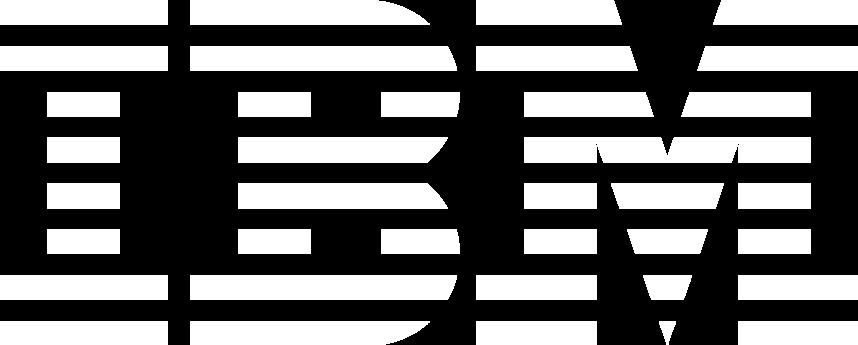
GLEN WHITE

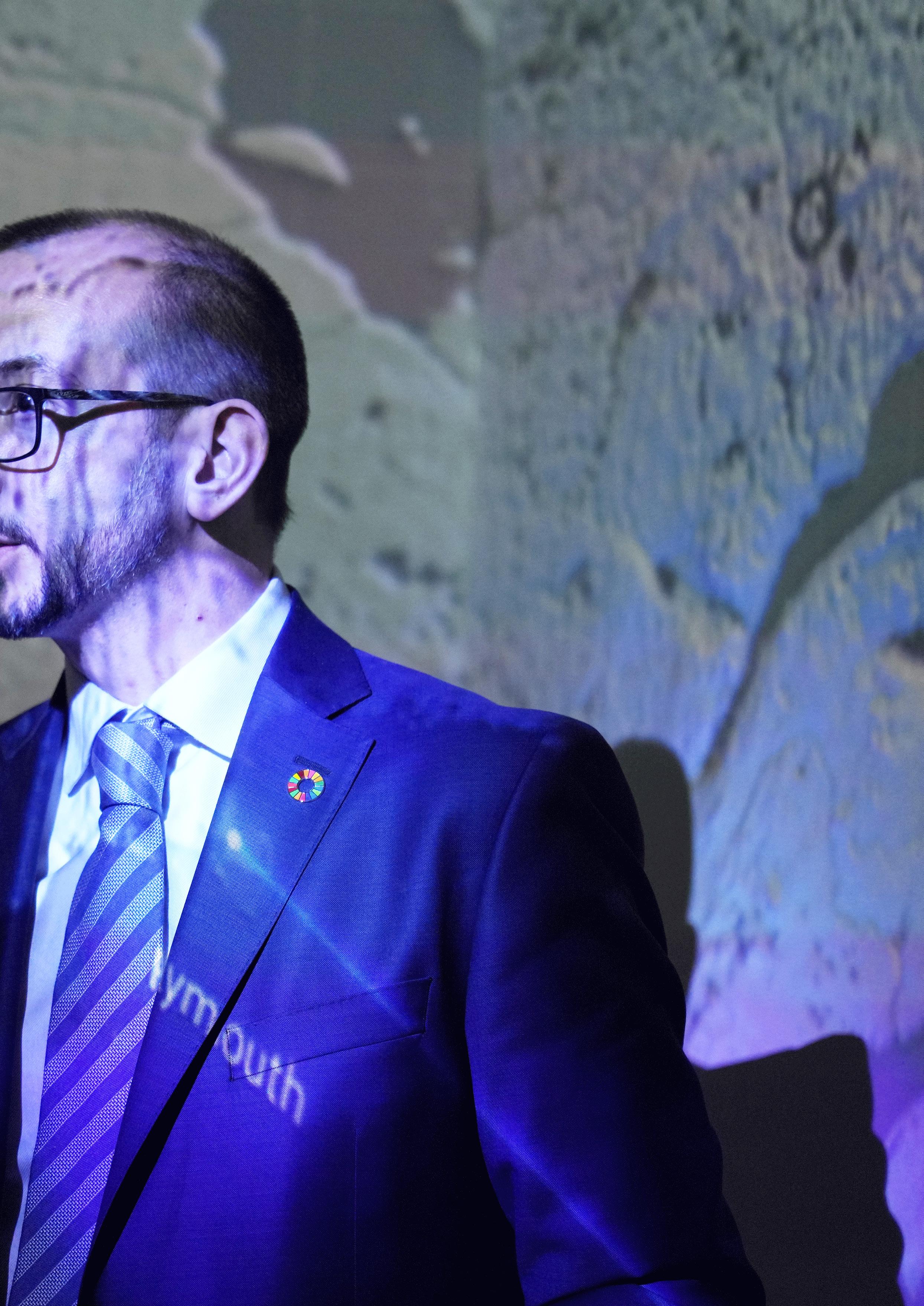

Idon’t want to sound alarmist, but the world has until 2025 to implement massive changes, ecologically speaking, or we’re all going to have a big problem on our hands,” says Adam Thompson, Head of Global Sustainable Finance and ESG for IBM Consulting.
Thompson, who is an expert in data and sustainability, is also, in his spare time, an EU Climate Pact Ambassador – a platform that informs, inspires, and supports climate policies and action in local communities and broader networks.

The British father of three – who currently lives in the Bavarian Forest, Germany, is a passionate advocate for renewable innovations, green technologies, and the transformation of the financial space. From where he’s sitting, accountability is key in driving the change required to prevent climate disaster and mass migration that currently looks imminent if we don’t act NOW!
He says: “In my day job, I work with clients to holistically look at how they embed environmental, social governance, or economic factors into their decision making and how do they operationalise that as part of a transformation for pathways to netzero, for climate, nature, or indeed how to rebalance society as a whole. The EU Climate Pact is work that I do in my spare time, along with living as self-sustainable as possible. So, I hopefully not just talk the talk, but also walk the walk.


Indeed, Thompson, who sees his position more as a vocation than a career, does not describe sustainable finance and ESG merely as trends. “This is a movement – a global,
worldwide movement. This is not just about how to apply technology across services. This is really about how we, as one planet and as one society, ensure that we have a planet for the next generation.”
They are powerful words – but ones he stands by. “We need to consider how, in 10, 20 years down the line, the next generation is going to be able to balance their resources. We are on a tightrope, and what’s interesting is that FinTech startups are really beginning to look at nature-based solutions, and these solutions have had incredible exponential growth in a short amount of time by embracing exactly the very solutions that IBM has been speaking about.”
“It’s fundamental to everyone's ‘livelihood’ that we address this”
ADAM THOMPSON
HEAD OF GLOBAL SUSTAINABLE FINANCE AND ESG, IBM CONSULTING
But where does the world’s biggest technology company fit into all this? Well, according to Thompson, it comes down to data, meaningful and accurate communications, and collaborative innovation. He explains that IBM Consulting is the linchpin of the organisation, and that its role is to talk to clients and understand where they are in terms of their ESG and sustainability drives.
“We measure their performance with regards to their own indicators on sustainable finance and how we can actually leverage data as to whether that’s from geospatial feeds or whether that’s from their own existing data streams they have to date”.
TITLE: HEAD OF GLOBAL SUSTAINABLE FINANCE AND ESG
COMPANY: IBM CONSULTING
INDUSTRY: IT SERVICES
LOCATION: GERMANY
Adam is IBM Consulting’s Head of Global Sustainable Finance and ESG Leader
On both a personal and professional level, Adam is dedicated to lead and contribute to the necessary changes required, in order to make our planet more sustainable - since 2022 Adam has proudly performed his voluntary role as a European Climate Pact Ambassador.

Adam has already worked across 30+ countries in Europe, Africa, Middle East, India and Asia Pacific, and managed teams of 100FTEs+. Consequently, Adam is even more motivated to address sustainability challenges, as he's seen first-hand the impact climate change is having for various populations around the world.

“We normalise and transform that into insights that can be actionable for themselves, for their own clientele, but also ensure that that’s competitive and comparable with their other industry incumbents and geos accordingly. We also work with our technology partners here in IBM as well as our ecosystem partners, where we have really leading edge and specific requirements, putting our IBM research and quantum into freight so we can actually provide new innovative solutions with regards to ESG and sustainable finance.”


For Thompson, it’s not just a job but a role that he embraces with zeal. “I also try to share knowledge and experiences as to how we can all make an impact individually with regards to climate; how we can all be more self-sufficient in our daily lives and make

“I try to share knowledge and experiences as to how we can all make an impact in regards to climate”IBM Consulting: Tacking ESG and finance through technology WATCH NOW
ADAM THOMPSON HEAD OF GLOBAL SUSTAINABLE FINANCE AND ESG, IBM CONSULTING
less waste, but actually be more circular and regenerative in our day-to-day activities.”
Circularity is a key part of the research and development IBM Consulting is concentrating on. The concept focuses on business accountability, from production, to supply chains to the customer, and then to the recycling of products once they have been discarded. This is key in circumventing the ‘throwaway’ nature of the current industrial business systems that sees millions of tonnes of waste being dumped into the environment rather than managed sustainably.

But the definition of sustainable finance and its place within ESG isn’t always immediately clear. This is, in fact, a point that Thompson is keen to clarify.
“Sustainable Finance is really an umbrella regarding embedding ESG into any of the decision making and insights. At IBM, we also provide data curation accelerators to support the embedding of ESG into decision flows. Indeed, we also provide analytical suites regarding big data and new data sets that organisations might not necessarily have to date, for example whether its measuring biomass in nature, or societal impacts and related ecosystem services.
“We actually provide that as an end-toend data stream so that when you actually want to create new value add or products for your own services or for your own clientele, you can then also containerise them, easing consumability accordingly.”
“Our Consulting Sustainability Services approach also enables clients to co-innovate
by scaling to other use cases such as ‘key focus themes of climate-first but not Climate-Only, with for example the 30/30 agreement from COP15 etc.’ Or, indeed if you wanted to do something that’s completely nuanced, such as naturebased solutions such as engineered reefs, we would support organisations from an IBM garage co-creation all the way through to the solution that you can then assetise that and actually sell that as a service, as well as having it recognised on your balance sheet –a true sustainable transition”
With such strict goals regarding timelines and creating more sustainable financial systems globally, the work is challenging. Thompson explains that the ideal transition into sustainable finance needs more progress and catalysts. In recent times various geopolitical factors and energy crises as well as certain corporations’ unwillingness to genuinely embrace the ESG agenda has slowed the ESG momentum. He speaks about the green asset ratio (GAR) and what that currently means in relation to assets being categorised as “green” by the EU taxonomy for Europe.
“Right now, organisations might find that they’re in single digits in terms of percentage points, which will be quite normal as we’re both on a transition journey, and there is diverging scope and value between the various financial institutions structures. But that said, what would ‘Good’ look like? Well, for most organisations, by 2025 to 2030, ‘Good’ needs to look like most organisations starting to be at the minimum 50% mark and above, to show true transitional improvements.”
Despite the challenging outlook for many companies to reach their needed

sustainability commitments, Thompson is optimistic that technology and co-innovation are the accelerators to make those aims a reality. “When you realise it’s only Europe that we might get up to 25% of renewables by the end of the year, then compared to where we originally started in the early 2000’s we were still in single digits, then there’s definitely the ability to transform. Capital, ironically, is not the challenge. The challenge is to put the capital to those projects, which would actually contribute to meaningful change and support for example the achieving Europe’s Fit for 55 Target of 40% renewable energy by 2030”.

“And this isn’t just about a tick box exercise; this is really looking at it holistically by saying to clients, ‘If you want to invest in wind turbines or if you want to invest in solar power farms, that’s great, but you also need to look at some of the other green elements beyond climate and secularity, for example, about societal impact’ etc.”
Thompson says that having a more transparent landscape regarding the implementation of sustainable finance and ESG will act as a catalyst for greater adoption of practices and that ESG risk ratings require more oversight ref the granularity of good quality primary datasets to ensure all
“It’s very clear that the runway that we all have to address this is shortening”
ADAM THOMPSON HEAD OF GLOBAL SUSTAINABLE FINANCE AND ESG, IBM CONSULTING
corporations are working towards impactful ratings and consequently investments.
“ESG risk ratings have been very diverse. In that level of granularity, it’s been ranging from the 50 to 100 mark, through to 300, depending on which rating agency has been leveraged. That’s going to be the next one where this secondary data source – which has been good in front or perfect for the last number of years – will change.”
“More importantly, it’ll provide that holistic, quadruple bottom line that the people, planet, prosperity, and purpose lens for the consumer can be included in.”
He continues: “Some organisations talk about ESGI [Environmental Social Governance Impact] – that quadruple bottom line is intrinsic and linked to our UN SDGs. It’s not just about making a return on investment over five or 10 years. It’s about having something that’s regenerative, that has a positive impact on society.

“But when it comes to the industry as a whole, I think we’re at a crossroads. You have those who are really embracing sustainable finance – based on my own dialogue with institutions, this certainly happens in Europe a lot more than in the US to date.
“Potentially once we have clarity on the US Security Exchange Commission in terms of regulations, this dynamic might change. But right now, it has been regulatory driven. But what is also clear generation-wise, from a consumer spending perspective, this is also changing the trend and the focus of ESG adoption.”
Digital partners driving the ESG movement. IBM is naturally not alone in its efforts to deliver this ESG message and works with a wide network of technology giants globally to innovate and deliver new products, services, and ideas within the ESG and sustainable
finance markets, including AWS, Celonis, Microsoft, Oracle Salesforce, SAP, Workday.
“If we’re talking sustainability performance management, a lot of corporations obviously have a book of record. So, with our Partners SAP, Oracle and Workday, absolutely we will work hand in glove together, and we complement one another, whether it be embracing their integrated sustainability software capabilities, or a co-innovation of new assets, or indeed where we take some of our own sustainability software portfolio offerings such as Envizi to provide a holistic solution jointly to our clients.
“In terms of the social element, we work market leading companies such as FRDM, where we actually look at the whole endto-end value chain and environmental factors, but also take into account a multitude of social factors from employee welfare, diversity and inclusion, and working conditions for all those from tier one to tier X suppliers.”
However, he points out that despite the advantages of the digital ecosystem, and the advances IBM Consulting has made, many challenges still exist because technology stacks aren’t standardised across the board. “When you’re talking about other platform providers, we have alliances, but we also leverage their platforms. So, it will never be one size fits all.”
The future of sustainable finance Thompson is keen to emphasise that, despite the broad technocratic processes involved with implementation of ESG regulations, it is ultimately all about serving humanity more effectively, as well as preserving the environment.

“First off, we already have goals in place that we don’t leave anybody behind – the 17 UN SDG (sustainable development goals) make that very clear.
“For myself, I would like to see that we don’t just act as the torch-bearers, but we actually take more accountability than we do today, in terms of when we make financial investments, and that we ensure that it’s
“There will be a domino effect from nature and, in terms of biodiversity degradation, water scarcity, and obviously climate change itself in terms of the temperature rises”ADAM THOMPSON

not just during the light power, but beyond.” Here is the need of life-cycle investing and circularity transition indicators as part of financial investing.

Circularity in terms of production, use, and recycling, is key. “It’s more about becoming attuned to the needs of both the industry but also the needs of the planet, as we are going through this sustainable transition. And I can see innovation playing a fundamental role in the creation of more secondary markets for further recycled and repurposed materials too. But it’s ultimately a collaborative dialogue because we all have a role to play from design to consumption to regeneration – both at a corporate and individual level.”
Furthermore, Thompson explains that whilst COP27 and COP15 have played a vital role in addressing the needs of the planet as we move forward, time is of the essence. “The timeline for required change is actually lower than 2025. You realise very quickly that there will be a domino effect from nature and in terms of biodiversity, degradation, water scarcity, and obviously climate change itself in terms of the temperature rises and consequently climate human migration as a result”.
He concludes: “It’s fundamental to everyone’s livelihood that we address this. And sustainable finance is absolutely key in playing that by channelling funds and investments in the right direction to make impactful change. But it’s very clear that the runway that we all have to address this is shortening. We need to take action now for the foreseeable future.”

Cold, hard currency is going extinct as digital transactions and CBDCs trend globally. But when will it happen and what are the consequences?
WRITTEN BY: JOANNA ENGLANDCash is a critically endangered species in the financial currency ecosystem. In comparative terms, it is being eradicated far faster than it took settlers in Mauritius to exterminate the dodo back in the 1600s – an appallingly swift process of approximately 90 years.
Doubtless, those settlers barely gave a thought to their actions, which saw the lowered population – and then the complete decimation – of a species that had been around for thousands of years. The dodo had been in existence since prehistoric times, peacefully contributing to its environment and the balance of nature, and it still had much to give.
Likewise, the existence of currency in a solid form still plays a critical role as the bedrock of our modern-day economy.
Cash has been with us for thousands of years. According to historical documents, the first standardised coins were created in a region of western Turkey in at least 700BC. They were made of a substance called electrum – which is a silver and gold amalgam – and marked the introduction of a new payment movement that would transform the world.

PayEX offers customizable AR/AP Automation software for B2B businesses looking to optimize their working capital and unearth hidden revenue otherwise written off due to manual processes and slow communication














Prior to that, goods were bartered as payments, with livestock being considered one of the most valuable payment options. The word ‘cattle’ even originates from the Latin words ‘caput’ and ‘capital’. Essentially, transactional systems that have seen the physical transfer of goods for payments are a fundamental part of developing human history and societal behaviours.
And while ‘moving with the times’ is inevitable, it might be wise to stop and think about whether ditching our coins and notes entirely, which have served us well for aeons, in favour of the entirely intangible yet inarguably more convenient digital payments, is a wise idea.
According to a 2015 survey by Pew, over three-quarters of US consumers used cash. By 2022, 60% of US consumers only used cash ‘on occasion’, and 40% said they were completely cashless.

In the UK in 2022, an estimated 8mn people were still reliant on cash to carry out vital transactions. Indeed, 1.7mn in the UK are also unbanked, despite the widespread mobile technology usage. As Western countries race towards an all-digital financial landscape, sections of society risk being left behind.
On a global scale the situation is less a cause for concern and cash is still king in
“ONE CAVEAT TO THIS BENEFIT IS THAT WHILE IT’S HARD TO ‘LOSE’ MONEY IN A CASHLESS SYSTEM, PEOPLE CAN BE MORE SUSCEPTIBLE TO THEFT THROUGH FRAUDULENT ACTS”
some places. Romania, for example, still uses cash in 78% of its transactions, while 63% of Bulgarians prefer it to digital payments, along with 55% of Egyptians and 60% of Kazakhs.
Nonetheless, it's only a matter of time before innovation and convenience catch up.

Going completely cashless benefits customers and businesses – this is indisputable. But it also benefits governments. And often, these entities don’t have the best interests of their citizens at the forefront of their plans.
Most Western countries baulk at the idea of following China’s lead, and with
good reason. The country has an appalling human rights record and is deemed by many to be a complete surveillance state. It’s suggested that Chinese citizens must adhere to a social credit system curtailing their freedoms if they don’t obey state-mandated expectations; they are monitored through biometric security technologies; and they are data fed through mobile devices that track their every movement and transaction. Little wonder then, that the Chinese government has been at the forefront of the Central Bank Digital Currency (CBDC) race, already piloting digital yuan via e-wallets back in 2020.
Digital currencies can also be used as an instrument of control against dissent – and this has been seen not only in China, but in Western nations too.
“ONCE BANKS STOP ACCEPTING CASH, OR MAKE IT EVEN MORE EXPENSIVE TO PROCESS CASH, IT WILL ALL BUT DISAPPEAR”
ANIL MALHOTRA CMO, BANGO
In 2022, when truckers in Canada protested against their government’s vaccine mandates and continued lockdowns, their digital currency donations were blocked and individual bank accounts belonging to the protestors were frozen by the authorities.
Such a move might be considered by some to be sensible considering the nationwide disruption the protests caused. But the actions also demonstrated how easily governments can suppress people who don’t support them by cutting off their access to money – a life source in a capitalist economy. None of this would have been possible if the protestors had been using cash.

1 . Norway - 97% cashless
2. Denmark - 97% cashless
3. UK - 95% cashless
4. Sweden - 95% cashless
5. Switzerland - 94% cashless
Privacy is another concern. A digital transaction can be tracked from start to finish – and, arguably, is therefore considered more secure. But not everyone wants every detail of their transactional life monitored and the resulting data used to ‘profile their habits’.
Anil Malhotra, CMO of the fintech Bango, told us recently: “For most people, the main disadvantage (of going cashless) is the scrutiny that governments – and ancillary advisors and agents – can assert over an individual’s private activities. With trust in government and its officers at a low point in democratic societies with open economies, there are genuine concerns about government agents gaining greater insight into personal affairs.”
Malhotra also expressed concern regarding the eradication of cash having an impact on people who are currently unbanked. He said: “In the short term, in certain societies, cash is essential for financial inclusion. This is also true for certain demographic groups in all societies, such as older people. So, it follows that one disadvantage of losing cash could be the exclusion of certain groups from the mainstream economy.”
Mike Peplow, CEO of Paynetics, concurs: “Cash also has the benefits associated with anonymity. You can pay someone without having to know them personally or know their bank details, and people may see this as less of a risk as no details are exchanged. On the same note, cash cannot be traced which some people find advantageous as they don’t want the state to know their full financial history.”
He continues: “Electronic payments require a sophisticated infrastructure which, in some countries, is not yet available or is very expensive to access. This may mean it’s not possible to go cashless everywhere. There are also many people, particularly vulnerable people, who find budgeting with cash a lot easier than using electronic payments. And, for those without a fixed address or identification documents, you can use cash without having to undertake Know Your Customer (KYC) checks.”
The arguments for reducing cash use are numerous and valid. But the reduction in cash use has also occurred because digital payments are cheaper and more convenient for banks. For example, the cost of maintaining ATM networks is borne by banks, who then pass that on to their customers. As competition between banks rises, with neos

and challengers offering attractive, low-cost alternatives, incumbents have had to reassess their services to remain competitive.
The decline of cash is also being accelerated by retailers and other businesses who shun it because of administration processing time, costs and higher insurance premiums.
New technologies have also resulted in digital payments becoming extremely convenient because they can also be made in real time, via blockchain and across borders, eradicating the need for expensive and time-consuming processes that are also open to human-caused errors. And online shopping – now the dominant retail trend in Western countries – is also only possible through digital transactional methods.
Peplow says mobile technology has been the key transformative factor in the rise of digital transactions. “Accessibility and day-to-day end-user support for banking products are key. The rise of mobile banking and digital banking products has allowed more of the unbanked to become banked, though there’s still work to do.”
Malhotra comments: “Simplified personal financial management is the obvious benefit for the average person. Much of our financial activity is already quasi-digital today. In much of Europe, Asia, and the Americas, people receive money through electronic transmission from employer to bank, net contributions to the government through the digital tax system. The majority of bills are settled electronically. The dependence of physical tokens of currency is diminishing year on year. Most people can manage their finances more conveniently in this way.”
However, he concedes that although digital payment systems eradicate issues such as physical theft and loss of money,

they don’t prevent other types of financial crime; rather, fraud can be a bigger threat within a cashless system. “One caveat to this benefit is that while it’s hard to ‘lose’ money in a cashless system, people can be more susceptible to theft through fraudulent acts.”
It’s impossible to say, because some countries inevitably will be faster than others in reaching this goal.
China issued a statement in 2017 declaring it wanted to make all rural areas cashless by 2020. This has not quite been achieved – but progress has been significant. Sweden is 95% cashless, and this has raised concerns from some areas of Swedish society, where there is a belief that financial institutions and governments now have far
“CASH CANNOT BE TRACED, WHICH SOME PEOPLE FIND ADVANTAGEOUS AS THEY DON’T WANT THE STATE TO KNOW THEIR FULL FINANCIAL HISTORY”
MIKE PEPLOW CEO, PAYNETICS
too much information and control over the lives of citizens.
The UK looks set to go cashless in 2026, but that could be sped up, or slowed down, according to public opinion and decisions by banks to maintain cash services. But Malhotra predicts that it will take less than two decades to create a cashless global economy.
He says: “The world will be largely cashless within 20 years. The momentum behind online payments and electronic settlement is what is driving us towards a state of cashless-ness.”
Ultimately, digital financial superhighways are the future of commerce. However, in a world where climate events and cyber attacks dominate the headlines on a daily basis, the fallback for communities hit by
a crisis would need to be cash because its tangible nature is not affected by griddown situations.
But, unless greater attention is paid to the continued endangerment of our notes and coins, they will likely be completely phased out by 2040. In comparative terms, the first online payments occurred in the early 1990s, and this would make the demise of cash – the bedrock of our financial systems for almost 3,000 years – extinct in just 50.
In acknowledgement of the power banks have over this transition, Malhotra adds: “Cash may still be available, but, perversely, it will be accepted for curiosity value, rather like issuing music on a CD! Once banks stop accepting cash, or make it even more expensive to process cash, it will all but disappear.”

 AD FEATURE WRITTEN BY: ALEX CLERE
PRODUCED BY: BEN MALTBY
AD FEATURE WRITTEN BY: ALEX CLERE
PRODUCED BY: BEN MALTBY

To anyone well-versed in marketing speak, descriptions of a superlative nature are usually best avoided. Anything that is the ‘biggest’, the ‘most’, or the ‘best’ is usually nothing more than corporate bluster and hype. But no matter which way you slice it, Fiserv is one of the largest and most significant players in financial technology.
First, take its reach: Fiserv does business in more than 100 countries, and, in the US, its products or services reach nearly 100% of households, either directly or indirectly through a financial institution, fintech, merchant, or biller. Then there’s the size of the business: Fiserv has 40,000 associates globally and serves thousands of financial institutions and millions of merchants and consumers. Finally, its impact is reflected in the range of financial solutions and services offered, spanning the full spectrum of banking and commerce.
When Head of Fintech and Growth Sunil Sachdev and President of Digital Payments Matt Wilcox join me to discuss the company’s growing focus on open finance, the two are united by a clear common cause. Simply put: leverage the expertise and innovation Fiserv has to help clients continue bringing new financial innovations to market, deepening relationships by adding more value for the consumers and businesses they serve.
“Fiserv is in a very privileged position,” Sachdev says. “We are the largest core banking provider in the US, the largest digital banking provider, and the largest bill payment and person-to-person payment provider in the country. And that’s not to mention the enviable footprint we have as a leading provider of services like merchant acquiring in markets all around the world.
“We have thousands of clients in the financial institution space, and millions of clients in the merchant and small business space. When we think about how we serve those clients every day, it's all about earning their trust and ensuring that the products and services they have from us are performing. That's paramount.”
The company’s success is testament to the transformational impact it has managed to achieve on behalf of its clients. Fiserv has a wide spectrum of clients including financial institutions, fintechs, enterprise merchants, and main-street merchants, as well as corporate entities all looking to increase engagement with their customers. The Fiserv approach to open finance helps define and accelerate its clients’ ability to innovate with new financial products and experiences, embedded directly at the point of need.
The talented people within the business help tailor approaches to individual clients, working with them to understand their
Fiserv is helping clients, including fintechs and global brands, unlock new revenue streams with solutions that reach virtually every US household
 Sunil Sachdev and Matt Wilcox
Sunil Sachdev and Matt Wilcox
TITLE: HEAD OF FINTECH AND GROWTH
INDUSTRY: IT CONSULTING

LOCATION: UNITED STATES
Sunil Sachdev is a global fintech executive with a significant breadth of experience in banking and payments at companies such as American Express, Meed and Pershing. He has worked for Fiserv for nearly a decade in various roles and geographies. In recent years, he led the community bank segment, with a focus on enabling financial institutions to leverage modern technology to deliver differentiating experiences and improve time to market. Since 2021, Sunil has headed up the fintech segment, leading a team that has greatly accelerated the planning, execution and delivery of open finance and digital transformation capabilities across the enterprise.
needs and lend a guiding hand – something that becomes increasingly valuable given the recent turmoil in the markets and general economic volatility.
“Based on the broad set of ledger, processing, acquiring, payments and data services we have at Fiserv, we continually advise clients on how they need to evolve their best-of-breed offerings to stay competitive in a fast-moving regulatory and financial services landscape,” Sachdev explains. “We believe that makes Fiserv very unique. It would be harder and less cost effective for them to engage with multiple parties who may only be familiar with one specific area and not the bigger financial services picture.”
When asked who he admires or looks up to in life, Sachdev gives a wry smile. There is the touching deferential nod to inspirational colleagues and bosses-gone-by – one of them being Ken Chenault, long-time CEO of American Express, where Sachdev worked for more than a decade. But then he admits to being a long-suffering New York Knicks supporter and a fan of the Rocky movie franchise.

“I guess I enjoy the underdog story,” he says. “There’s something about those types of stories that really highlights the excellence of people, whether they're athletes or in other walks of life.”
This sentiment is pertinent to the role Fiserv plays in facilitating financial inclusion
“Fiserv is all about taking something from the whiteboard and bringing it to life. For me, that's the best part of it”
SUNIL SACHDEV HEAD OF FINTECH AND GROWTH, FISERV
and increasing access to financial services through its products. Sachdev has an extensive background in banking and payments, working for fintechs both in the US and overseas. His travels have seen him put down roots in the UK, South Asia and India before returning to New York five years ago. This experience has given him a much richer insight into the challenges and obstacles that face consumers in other parts of the world.
“Living overseas and working in emerging markets really makes it personal for me to develop services and capabilities that can lift people,” Sachdev states. “I feel like I draw on that quite a bit to help deliver some of the services that we're thinking about delivering today.”

“Living overseas and working in emerging markets really makes it personal for me to develop services and capabilities that can lift people”
SUNIL SACHDEV HEAD OF FINTECH AND GROWTH, FISERV
According to the World Bank, more than 1.4bn people worldwide remain unbanked, while the Federal Reserve reports that 22% of American adults (63mn) are either unbanked or underbanked – cut off from vital financial services. Financial technology has a real power to elevate people, particularly underserved communities, and this is one of the reasons that Sachdev calls it a ‘privilege’ to show up for work each day.
“Fiserv is all about taking something from the whiteboard and bringing it to life,” he explains. “For me, that's the best part of it – it’s about having an idea or identifying a problem, having a conversation with our clients and other market participants, being able to bring different subject matter experts together. Then we combine the technical pieces, commercial pieces and the go-to-
market pieces to build a successful product or service to address that opportunity. That's why I enjoy it. I don't really think of it as work at all.”
Whether it’s a community bank leveraging fintech tools to better support the financial wellness of its customers, or a fintech leveraging Fiserv technology to bring these capabilities directly to market, Fiserv is bridging the gap to bring these scenarios to life at scale.

The business unit that Sachdev heads up –the fintech-focused team – was founded little more than a year ago. Before that, Fiserv was servicing fintechs in a siloed way, more often at a product level rather than a strategic one. Now, clients across a
range of sectors that want to tailor financial services products for their various customer segments have a single entry point and are guided through their journey.
In turn, as the business unit matures, it is transforming to meet the needs of those clients. On any given day, Sachdev finds himself working closely with the varied talent that Fiserv boasts within its vast workforce. The goal is to integrate Fiserv services and capabilities and bring them to market in a more cohesive way, while modernising the tech stack to increase agility and accelerate time to market.
One thing that has aided in that pursuit is the Fiserv acquisition of Finxact, which was completed in April 2022. Leveraging the latest technologies, Finxact has developed a cloud-native, next-generation core banking platform designed to meet the scale and performance requirements of organisations of nearly any size. At the time of the acquisition, Fiserv President and Chief Executive Officer Frank Bisignano said

“We're headed toward an environment where data is going to move more freely, but in a really sound and safe way. There will be more of a governing body around the movement of data”
MATT WILCOX PRESIDENT OF DIGITAL PAYMENTS, FISERV
TITLE: PRESIDENT OF DIGITAL PAYMENTS
INDUSTRY: IT CONSULTING
LOCATION: UNITED STATES
As President of Digital Payments at Fiserv, Matt Wilcox is responsible for turnkey services for a multitude of Fiserv product lines while also focusing on creating high-growth digital experiences in the real-time payment solutions marketplace. Wilcox oversees collaboration opportunities within the financial services industry, helping to build digital and payment strategies and product innovations that drive revenue, client retention and new client acquisition. During his career, Matt has directed work in emerging technologies, mobile and online banking, payments, social media and marketing strategies.

the deal would “accelerate the ability of fintechs and financial institutions to deliver differentiated digital banking experiences to their customers” – something that Sachdev and his team spend a large part of their waking hours focused on.
Many financial institutions are choosing to run Finxact alongside their current banking core as a flexible platform to deliver new innovations and initiatives. A great deal of post-acquisition investment has focused on orchestrating a seamless backend experience to accommodate implementations that involve multiple systems of record.
For fintechs and other businesses leveraging Finxact as the banking-andpayments backbone for all types of creative use cases, the vast network of financial institutions served by Fiserv provides a ready source of sponsor banks to support these endeavours.
Fintechs can also tap into the power of the Fiserv network by offering their solutions to financial institutions through AppMarket, a digital marketplace where thousands of banks and credit unions using Fiserv core solutions go to access pre-integrated fintech innovations to expand their capabilities. With the high customer acquisition cost of direct-to-consumer models, many fintechs find that distributing their solutions through financial institutions can speed up time to revenue.

Part of the revolution behind open finance has been around data. Indeed, it would be almost inconceivable for the fintech use cases that are popular now to have ever existed were it not for consumers being able, and willing, to share their data through APIs.
For Fiserv, open finance has been a way to accelerate innovation and increase industry collaboration.
As Fiserv has opened its ecosystem to support this revolution, financial institutions, fintechs and other businesses now have multiple ways to consume and connect with data. Developer Studio provides access to Fiserv restful APIs, including a workspace that gives developers instant access to begin working with core banking APIs. Financial data can be streamed from banking core platforms in real time, and cloud-based data storage provides a way to tap into deep and wide datasets on demand.
Fiserv also has built a data aggregation platform that brings together data from 18,000 sources, including financial
institutions, a full biller network, brokerage and wealth management houses. Providing consumer-permissioned access to this data creates the foundation for a growing number of open finance use cases.

“We're starting to see the area of open finance really open up,” explains Matt Wilcox. Wilcox is President of Digital Payments at Fiserv and, as such, sits at the beating heart of fintech innovation – all of which begins with data. “We've seen a faster clip of innovation. And that's starting to open the doors for industry collaboration. We're working with countless companies where that opportunity exists now and there's a faster path towards more open finance.”
Until now, innovation around open finance has largely been concentrated
“We've been building and nurturing our data aggregation platform, called AllData, for about 15 years”
MATT WILCOX PRESIDENT OF DIGITAL PAYMENTS, FISERV

in other regions like Europe – but North America is slowly beginning to catch up, Wilcox posits. For the customer, he explains, this brings innumerable benefits. And, where once open finance was mostly about personal financial management (PFM), it is now spreading into other exciting use cases including real-time account verification, real-time money movement, and new ways to pay at a merchant such as pay by bank.
“The consumer will benefit because there's going to be a better mitigation of fraud and risk,” Wilcox says. “Financial institutions will benefit because they'll be able to provide more financial wellnesstype solutions, and I think everyone else is going to benefit from a more personalised experience and new options for faster, more secure money movement. Having access to the data within an open finance environment is going to make things unique for you or for me in ways that we haven't even thought of yet.”
Even in a very simple sense, onboarding and ID verification are changing. The option for consumers to share their personal transactional data through an open API rather than having to manually upload documents is powerfully transformational. And in these times, it is imperative that businesses have a thorough handle on who their clients are. Wilcox believes we're witnessing a tilt towards open finance being primarily driven by compliance and AML use cases.
“We've been building and nurturing our data aggregation platform, called AllData, for about 15 years now,” Wilcox continues. “The original use case was PFM; now, we're seeing the use cases of that data aggregation platform explode, especially with open finance. A couple of things have happened. First, we've moved away from the old model of screen scraping to direct access agreements, and we can now pull data in real time, which means real-time data can be used in open finance ecosystems.
“Data aggregation has moved beyond a PFM use case where we're now using it for fraud and risk management. We're using it for verification that a user is who they say they are. That a given user owns the account they say they own. If they then want to connect another bank account at a different bank, we can verify their ownership in real time.”
This has taken on renewed significance in the past year. Multiple disparate sanctions lists mean that companies need to know who their customers are more than ever; coupled with a crackdown in the US on money laundering, compliance is a key consideration for fintechs and banks alike.
Despite the optimism around open finance, it’s clear there still need to be checks
“When we think about how we serve our clients every day, it's all about earning their trust”
SUNIL SACHDEV HEAD OF FINTECH AND GROWTH, FISERV
and balances on what can be done with consumer data. It is their data after all, so informed consent is important.
According to the Pew Research Center, nearly 80% of Americans are concerned by how their personal data is being used online – and a similar percentage report having little to no confidence that companies will admit to mistakes and accept responsibility if a data breach occurs. That level of distrust is not exactly conducive to broader adoption of new services among consumers, so taking the right precautions is more vital than ever.
One of the things that Fiserv has built into its AllData platform is an extension called AllData Connect, which allows banks

and financial institutions to determine who is able to pull data into, and out of, their ecosystem. Consumers can also decide whether they're willing to share personal data with a certain fintech or a specific integrator. “That puts the permissioning rights over consumer data in the consumer's hands,” Wilcox says.
Fiserv will guide that process to ensure the proper checks are done on the data being loaded into an ecosystem, but its main focus is very much on putting the right technology tools – and subsequently, the power – into consumer's hands. This entire approach replaces the screen scraping model, which can be challenging to maintain.
Sunil Sachdev believes that we can look forward to a bright future in fintech, thanks in part to the power of open finance. Perhaps surprisingly, he likens it to the galactic empire: “If I were to hypothesise on the future of open finance, I’d point to Star Wars and other futuristic movies, where payments and exchanges of value leverage some form of universal currency. I think that's what's promising about embedded finance and modern finance more holistically: we're able to embed payments and other digital assets into user experiences so transactions become much more seamless, and the fungibility of the underlying assets needed to enable a universal currency increases.
“Ultimately, it represents the ability for all of us to be on the same tender type, so to speak. Given the current direction of digital identity and real-time payments around the world, it’s hard not to see that we are moving quickly towards a universal payment vehicle that accounts for identity and value exchanged at the time of the transaction. It’s a future where you don't have to worry about geographical or regulatory limitations for whatever product or service you're looking to access.”
In terms of data ownership specifically, Matt Wilcox continues: “We're headed towards an environment where data is going to move more freely, but in a really sound and safe way. There will be more of a governing body around the movement of data – similar to what we've seen in other regions.
“Direct connections and direct access to data will open up innovation, because, despite the progress we have made in open finance around pulling in all of the financial data on behalf of a consumer or a business, we still have a way to go.
“I still think that the pace of innovation can increase exponentially, and I still think that there are too many entry points for access to the consumer's data. On behalf of the consumer, I'd like to see open finance really streamline that so we can put the consumer in a decision-making role on how their data can be used and shared. We've seen that, when we give them that ability, they're not necessarily restricted but they're exposed to the benefits of that personalised experience.”



NFTs have become incredibly popular as digital collectibles, but could they offer the global gaming industry a lucrative new money-spinner?
WRITTEN BY: ALEX CLEREIn the last couple of years, non-fungible tokens (NFTs) have opened up a whole new industry centred around the sale and purchase of digital assets – often digital artworks. But is one of the core applications for NFTs being overlooked?
S&P Global Market Intelligence says that video game publishers currently make more than US$3.6bn a year in revenue from in-game NFTs, and they expect this figure to skyrocket to $15bn by 2027 as their popularity rises.

Tom Whittaker, who is a Senior Associate in the technology team at independent UK law firm Burges Salmon, explains: “NFTs will play a central part in gaming and the metaverse because they can enable consumers to monetise their digital assets (for example renting and re-sale), allow
brands to monetise secondary-sales (which they traditionally haven’t been able to do effectively), and allow a new relationship between brand and consumer. All of this depends on the terms of the smart contract.”
James Rodd is Head of Marketing at Gamesta, which develops games where lending, trading and buying gaming NFTs from blockchains is baked into the gaming environment. He tells FinTech Magazine: “NFTs, or non-fungible tokens, are being used in the gaming industry in various ways. One of the most common use cases is for in-game items and assets – such as skins, weapons, and characters. By using NFTs, game developers can create unique and rare items that players can collect, trade and sell on blockchain marketplaces.
“Another way NFTs are being used in gaming is to provide proof of ownership and authenticity for virtual items. With traditional gaming, players do not own the items they purchase; instead, they are licensed to use them within the game. However, with NFTs, players can own their items and even transfer them between games or platforms, giving them more control over their gaming experience.”
Harness the power of data and leading-edge technology to turn existing know your customer (KYC) and anti-money laundering (AML) compliance challenges into opportunities

This obviously improves the gaming experience for players – but NFTs can prove to be a valuable new business opportunity for the makers of games as well. Rodd explains that developers can sell virtual real-estate as NFTs, allowing players to buy and sell virtual land within a game, or they can use NFTs to crowdfund game development and steer player behaviour –such as encouraging players to participate in certain in-game modes or features, or rewarding loyal players for reaching in-game milestones.

Despite the obvious enthusiasm that exists around the growing use of NFTs in gaming, the technology’s nascency gives rise to some legal and compliance concerns.
“A range of potential legal issues need to be navigated,” Burges Salmon’s Tom Whittaker continues. “These include gambling, advertising, privacy, and IP, to name a few. If financial services brands want to use NFTs, they will also need to navigate financial regulations about what digital assets they can sell, how, and where.”
The legal implications are not reserved to regulatory considerations for brands, though. There are risks to players who purchase in-game NFTs as well.
In March 2022, a hack on the NFT-based online video game Axie Infinity saw $600mn stolen from the game’s digital economy –something that S&P sees as being “the key factor behind the market's decline in 2022”. There’s a saying in the world of digital assets:

“BY USING NFTs, GAME DEVELOPERS CAN CREATE UNIQUE AND RARE ITEMS THAT PLAYERS CAN COLLECT, TRADE, AND SELL”
Increasing the interoperability of NFTs: Currently, NFTs are largely tied to specific games or platforms. But, as more gaming platforms adopt blockchain technology and standards for NFTs, there could be greater interoperability between different games and platforms, allowing players to use their NFTs across multiple games.
Enhancing gameplay experiences: NFTs can be used to create unique in-game items and assets that provide players with new gameplay experiences. For example, NFTs could be used to create rare, powerful weapons or vehicles that can only be obtained through gameplay or trading.

Enabling decentralised gaming: NFTs can be used to create decentralised gaming platforms, where players can interact with each other directly without the need for intermediaries. This could lead to more innovative and creative gaming experiences, as well as greater player control over their in-game assets.
Monetising user-generated content: NFTs can be used to monetise user-generated content, such as mods or custom skins. Players could create and sell their own NFTs based on their own creations, allowing them to earn money from their work and adding more diversity to the gaming ecosystem.
Creating new business models: NFTs can enable new business models for game developers, such as pay-to-play or subscription-based models. Additionally, NFTs can be used for crowdfunding game development, allowing developers to raise funds from players and investors.

“IF FINANCIAL SERVICES BRANDS WANT TO USE NFTs, THEY WILL ALSO NEED TO NAVIGATE FINANCIAL REGULATIONS”
TOM WHITTAKER SENIOR ASSOCIATE IN TECHNOLOGY, BURGES SALMON
“not your keys, not your money”, and the question of custody is twice as tricky when it comes to in-game purchases.

“NFT owners face multiple risks including cyber-attacks, theft, and IP infringement,” Whittaker says. “English law has evolved quickly, for example, to allow asset tracing of NFTs and legal documents to be served via NFTs. In New York, an artist who created NFTs was successfully sued by Hermes for their infringement of Hermes’ trademarks.
“However, IP holders and NFT owners still need to have the understanding and finances available to pursue legal action. The starting point is that prevention is better than cure; IP holders and NFT owners need to understand the risks specific to their property and what practical steps they can take to safeguard, monitor, and then enforce their rights.”
“It is possible that we will see greater scrutiny and regulation of NFTs in gaming in the future,” Gamesta’s James Rodd acknowledges. “This could come from both industry groups and government regulators, who may be concerned about consumer protection and the potential for NFTs to be used for illicit purposes, such as money laundering. However, regulation can also provide clarity and legitimacy to the use of NFTs in gaming, and can help to build trust among consumers and investors.”
One particular concern around the emergence of NFTs in gaming has to do with an existing in-game mechanic called ‘loot boxes’, which have been popular as a

 JAMES RODD HEAD OF MARKETING, GAMESTA
JAMES RODD HEAD OF MARKETING, GAMESTA
revenue stream for developers for years. They are separate from the digital asset space, but they involve a mystery assortment of collectibles or in-game items that a player can choose to purchase. Players rarely know exactly what they’re getting, beyond perhaps a loose description or a quantity –the thrill, after all, is in the unboxing. But the lack of transparency around the contents of loot boxes has understandably drawn comparisons with gambling products, especially in games that are popular with children.
James Rodd explains the delicateness of the situation with NFTs and why it’s important to ensure digital assets aren’t drawn down the same path as loot boxes: “The combination of in-game mechanics like loot boxes with NFTs can raise concerns around consumer protection and the potential for gambling-like behaviour.

“It's important for game developers to approach this type of offer with caution and implement safeguards to ensure that players understand the risks involved.
“One potential safeguard is to provide clear and transparent information about the NFTs being offered and the odds of obtaining them. This can help players make informed decisions about whether to participate in the
“IT IS POSSIBLE THAT WE WILL SEE GREATER SCRUTINY AND REGULATION
offer. Another safeguard could be to limit the frequency or cost of purchasing NFTs, to prevent players from spending more than they can afford or becoming addicted to the thrill of obtaining rare items.
“Game developers can also consider implementing age verification systems to ensure that minors are not participating in NFT offers or using blockchain marketplaces to trade virtual assets. Finally, regulators may need to be involved in setting standards and guidelines around the use of NFTs in gaming to ensure that consumers are protected from fraudulent or deceptive practices.”


What should we expect to see in future?
Despite the regulatory issues that need to be carefully navigated, Rodd is still positive about the ability of in-game NFTs to add an exciting new dimension to video games.
“The use of NFTs in gaming is still in its early stages, so we can expect to see significant changes in how they are used in the future,” he says. “One trend we can expect is greater integration of NFTs into gameplay mechanics, with game developers leveraging the unique properties of NFTs to create innovative new gaming experiences.
“We can also expect to see more partnerships between game developers and blockchain companies, as game developers look to leverage the technology and expertise of blockchain companies to create new gaming experiences.
“Overall, the use of NFTs in gaming is likely to continue to evolve and grow in the coming years, as game developers seek new ways to engage with their audiences and monetise their intellectual property. As with any new technology, though, there are risks and challenges that will need to be addressed – including issues around consumer protection and regulation.”
 WRITTEN BY: JOSEPHINE WALBANK
PRODUCED BY: BEN MALTBY
WRITTEN BY: JOSEPHINE WALBANK
PRODUCED BY: BEN MALTBY


With a wave of new regulations coming in from Washington DC, the businesses of ISOs, merchants and other leading payments providers stand to incur an extensive impact on their operations.
These shifts require providers to not only examine the latest fraud detection opportunities in far greater depth, but to also place a far more critical importance on fraud prevention, across the whole industry.

Payments providers in the United States may have had an easier time in recent years than those in the European Union – but that is all set to change, and it’s vital that payment providers are ahead of the game when it comes to regulation and compliance.
“What we’re seeing is that the federal regulators in Washington DC have turned their attention to the payments industry. In the past, if a merchant committed fraud, the payments industry could say, ‘We did what we could. It is certainly part of our problem, but it’s not our fault’,” explains Scott Talbott, Senior Vice President of Government Affairs at the Electronic Transactions Association (ETA).
“But, over the last couple of years, the federal regulators have taken the tact that they’re going after the payments industry, saying, ‘We actually disagree, we think you had a role to play here’. And they shifted the liability and the legal standard, to where

TITLE:
INDUSTRY: FINANCIAL SERVICES
LOCATION: CANADA
Darryl Cumming, is a seasoned Director of Product Management with over a decade of experience in FinTech and Payments industries. With a focus on risk underwriting automation, Darryl has developed a reputation for delivering innovative solutions that streamline processes and improve risk assessment accuracy. Darryl’s expertise in the payments industry, including data analytics, and process improvement, has made him a sought-after advisor for organisations looking to stay ahead of the curve in risk underwriting automation and fraud detection.
having actual knowledge of the crime or the fraud that was being committed was set at a new standard. This is causing some challenges in the payments industry.”

From a regulatory perspective, despite already being subject to a number of federal and state laws, fintechs face uncertainty as the federal government considers how to regulate a dynamic and innovative industry. The lack of clarity on regulations is also adding pressure on payment providers to manage compliance.
The Consumer Financial Protection Bureau (CFPB) has raised concerns about fintechs, with a particular focus on the payments and lending industries. In 2022, buy-now-pay-later (BNPL) was in the spotlight.

The Federal Trade Commission (FTC) has also scrutinised fintechs and payments companies. The FTC has developed new enforcement approaches and continues to bring actions against payment processors, payment facilitators, and similar companies.

These developments demonstrate that federal regulators in the areas of consumer protection are keenly focused on the fintech industry and its potential impact on consumers, businesses, and the economy.
One of the biggest questions that payment providers are facing is: Are the majority of companies in this sphere genuinely prepared for the increased liability that’s coming into the industry?
TITLE: SENIOR VICE PRESIDENT OF GOVERNMENT AFFAIRS
INDUSTRY: TECHNOLOGY
LOCATION: UNITED STATES
Scott Talbott is Senior Vice President of Government
Affairs at the Electronic Transactions Association (ETA) in Washington, D.C. and is responsible for its governmental strategies, and directing all of ETA’s policy and advocacy efforts. He also runs ETA’s Industry Affairs Department, responsible for ETA’s business policies. Talbott has over twenty years of experience advocating for the financial services and FinTech industries. He has received numerous accolades in his tenure, including being named a top lobbyist by The Hill for eleven years in a row from 2009 to 2021, as well as a “winner” for his work during the economic crisis of 2008 by Washingtonian magazine. In 2010, he appeared in the Oscar-winning film “Inside Job.” Once named NPR’s favourite bank lobbyist and the voice of the financial services industry.

“On an everyday basis, payments companies are prepared to deal with the risk of increased liability from the regulators,” Talbott asserts.
“A lot of what we’re talking about is just the daily blocking, tackling, underwriting and risk management of merchants of payments processors – something payments companies do very, very well.”

But, Talbott also explains that companies are having to adjust to dealing with this new overhang in lots of different ways – learning from the case laws, settlements, consent orders, fines and penalties.
However, for newer players, Darryl Cumming, Director of Product Management at NMI, argues that this preparedness is not always the case.
“If you think a specific industry that you’re working in is safe, and you take that for granted, I think you’re in trouble”
DARRYL CUMMING DIRECTOR OF PRODUCT MANAGEMENT, NMI
“I would say some payment companies are fully prepared – that they’re on top of these regulations, they’re doing their enhanced due diligence,” says Cumming.
“However, there are a lot of up-andcomers in the industry, and we’re seeing more and more software companies transitioning into providing card processing services. A lot of these are very new to underwriting; they’re new to ongoing risk review.

“I think a lot of these novices do not have the expertise. They don’t have reliable veteran staff on hand, and they’re struggling with some of these new regulations and risks that we’re seeing.”
So, why is it so important that we talk about this subject now? Well, to take just
ne example, the FTC recently published a tweet outlining their latest data, which shows that consumer reported losses to scams are up to US$8.8bn, as of 2022. That’s a 30% increase from what we saw in 2021.
“I don’t think there’s any better time to be talking about this than the here and now,” Cumming asserts.
“This is a topic that is always pertinent and timely, because fraudsters never sleep. As we build a 10-foot wall, they’re building an 11-foot ladder. So we build a 12-foot wall and guess what? There’s a 13-foot ladder coming right behind it,” Talbott adds.
“So, this is something that we can never rest on. We are charged with protecting the payments system, and making sure consumers around the globe have
confidence in the payments industry, and we do that by fighting fraud. So, it will always be, unfortunately, a timely topic.”

As well as regulations, reputational risk is also paramount – especially when the emphasis for responsibility is shifting.
So naturally, the big question is: where do the biggest vulnerabilities lie for payment providers?
“I think one area where I see a lot of payment providers in a vulnerable situation is in the automation of ongoing risk protection,” says Cumming.
“It’s a critical vulnerability. For merchant businesses and owners within your portfolio, being able to automate as much of the ongoing risk review as possible is essential. It’s very time-consuming work. Another major vulnerability is just a lack of audit capabilities.
“Making sure you’re able to prove that you’re doing this enhanced due diligence; keeping track of the merchants and their ownership structures within your portfolio having that documented; and having it to back up on for regulators are all critical pieces of the puzzle.”
Talbott also warns that – perhaps unexpectedly – one of the greatest risks to payment providers is a merchant who presents themselves as legitimate, but is actually a welldisguised fraudster.
“Probably the greatest risk is a merchant who is hell-bent on committing fraud. They know the system, know how to play the game and how it all works. If they are hell-bent on fraud, they’re going to work hard to achieve that fraud,” Talbott explains.
“We have systems to try and deal with this, but those are the areas that require the most effort and are the most dangerous, because they have already earned trust and a reputation.”

“I think a lot of these novices do not have the expertise. They don’t have reliable veteran staff on hand, and they’re struggling with some of these new regulations and risks that we’re seeing”
DARRYL CUMMING DIRECTOR OF PRODUCT MANAGEMENT,

In this ever-evolving field, navigating the regulatory changes and increasing liability is no mean feat.
“The metaphors I like to use are tiles in the mosaic, or trees in the forest. You have to look at all these cases, and try to string them all together,” Talbott explains.
One of the key takeaways here is understanding what the regulators are looking for. These are the red flags, and the lessons to be learned here are pinpointing the things that are wrong with the application or behaviour, which don’t seem to make sense.
“The easiest one – the one that the regulators usually start with – is, do you have a high chargeback ratio? Is it over 1% for that particular segment of merchants? If you’ve got a really high chargeback ratio (around 20%) the regulators are going to see it as a red flag,” Talbott advises.
“The metaphors I like to use are tiles in a mosaic, or trees in the forest. You have to look at all these cases, and try to string them all together”
SCOTT TALBOT SENIOR VICE PRESIDENT OF GOVERNMENT AFFAIRS, ETA
“Now, any one of these in and of itself is not dispositive. But, when you add them all together and create that mosaic, this is where the regulators will hone in.”
The key questions to ask include:
• Do they have a lot of requests for refunds?
• Do they have complaints being filed against them by governments?
• Do they have lawsuits being filed against the merchant?
• Do they see the merchant engaging in activities?
• Are they load balancing?
• Are they delaying chargebacks?

• Are they spreading sales over multiple accounts, in an attempt to obfuscate the fraud that they’re trying to commit?
• Do they use a lot of shell companies?
• Do they have a history of settlement actions or enforcement actions with the regulators?
• Are they missing or do they have incomplete or inconsistent info on a regular basis?
Then, it is a case of being careful not to onboard – or continue to keep on board –any merchants who engage in that type of behaviour. In short, if you understand what the red flags are that regulators are looking for, you can keep yourself ahead of the regulations curve.
“At NMI, our focus is very much on helping to automate as many of these initial early warning indicators as possible. We want to help your risk analysts focus on the items that really require their true expertise and attention, after it has been initially flagged,” Cumming outlines.
“The enhanced due diligence process is manual and labour-intensive – there’s no way around that. Our mission and our goal is to help automate the easier parts of that, to help your team and your experts focus where their attention is needed. Staying on top of both what the regulatory bodies and what the fraudsters are doing is a full-time job. So, I highly recommend (in addition to

NMI enables payments for over 3,200 partners and over 260,000 merchants across the globe
documenting your policy) going through those underwriting guidelines, to make sure you have something in place that will help you carry that load.”
Undoubtedly, it’s a complicated, multifaceted and ever-shifting situation. But, by implementing these measures and remaining diligent, payment providers can successfully keep one step ahead of both regulations and fraudsters alike.

Check that you have understood risk guidelines that coveringjust your risk underwriting and initial merchant onboarding decisions, but that also cover your risk and fraud-monitoring teams. It’s critical that everyone is working in
lockstep, understands what your policies are, and is able to pivot.
“If you have trouble doing that, or any part of that, seek help from experts such as NMI,” Talbott adds.
“ETA also has its guidelines available for support. Seek all the resources that you can to get yourself comfortable, because the money you spend upfront – and the peace of mind that you will gain from that – are far better than the fines, penalties, and risks that you face down the road.”
it will pay off in the next few decades
There is no doubt that the rise of fintech has helped bring people into the financial ecosystem who would have previously been excluded. This is especially true of developing countries – regions of the world that face greater financial inequities and often require more inward investment, two problems that fintech can help address.
According to Jon Frost, Head of Economics for the Americas at the Bank for International Settlements, “fintech adoption, especially in the developing world, is being driven by an unmet demand for financial services”. So how successful has fintech been in reaching underserved markets, and what does current penetration look like?
What impact has fintech had on developing countries?
“Fintech has, relatively speaking, improved the financial fortunes of developing countries,” says James Cope, SVP – Head of Product Management at Crown Agents Bank. “Fintech gives less affluent people in emerging markets access to financial services they wouldn’t get from traditional banks. From a payments’ perspective, it makes it easier and cheaper to send development sector payments, remittances, and trade payments, all of which benefit emerging market economies.”
This has largely been sparked by an uptick in the number of smartphones used in developing markets, which has enabled new opportunities for financial prosperity. According to GSMA Intelligence, smartphone adoption in sub-saharan Africa was already 49% in 2021 but is expected to reach 61% by 2025. Likewise, in Latin America, smartphone adoption stood at 76% in 2021 and could reach 83% – more than four in five people –over the same period.
“DEVELOPING COUNTRIES FACE MANY CHALLENGES, PERHAPS MOST PERTINENT OF WHICH IS THE DEVELOPMENT OF ROBUST REGULATION TO SUPPORT SERVICES THAT MUST BE SECURE AND EFFICIENT”
KAREN JORDAAN UK HEAD, WORLDREMIT
There’s renewed focus on using fintech to reduce financial inequality in emerging markets – and projections show
WRITTEN BY: ALEX CLERE
To put those figures into perspective, the smartphone adoption rate in the world’s largest economy, the US, is currently reported to be about 85%, but that too will grow by 2025.
Karen Jordaan, from digital crossborder payments company WorldRemit, says: “Globally, there are now over 6.5bn active devices, and this number is growing as they become increasingly affordable in developing countries. These smartphones – and access to the fintech services that are available on them – have led to the rise of online payments and other services improving the financial fortunes of developing countries.”
Experience composable banking with Mambu's SaaS cloud banking platform.
Learn more
Access to a smartphone is not just about the services that are available to those consumers on the ground – like digital payments or current accounts. It opens emerging economies up to new opportunities for inward investment: access to new marketplaces, fresh ways to connect with development aid, and, importantly, remittances from loved ones abroad. WorldRemit surveyed 3,000 international money senders and found that the main reason for their use was to help recipients cover the cost of education, healthcare, and utility payments back home.
Karen Jordaan says there are still challenges with fintech adoption –including inconsistent regulation, mistrust in technology, the high cost of internet access, and the challenge of connecting large, rural communities. But people are still coming online regardless: “Last year, the World Bank
recorded a 30% rise in the number of adults using financial accounts to 71% of the global population, something it attributes to fintech developments such as mobile money,” Jordaan says.
There are two stories to most statistics, of course, and the World Bank reporting that 71% now use financial accounts is no exception. On the one hand, it demonstrates a remarkable rise in financial participation – spurred on by the pandemic and the way in which governments around the world chose to deliver relief and support digitally. However, it still shows that nearly 30% are disconnected from the financial system –more, no doubt, in emerging markets, with developed economies likely dragging that statistic upwards.
“In short, a lot of developing countries still have a lot of people – frequently the majority of the population – who are unbanked or underbanked. Fintech has helped plug that gap and will continue to do so,” says James Cope from Crown Agents Bank.
Karen Jordaan adds: “Through the use of emerging technologies, the unbanked can build financial security for themselves. Remittance platforms, like those within [WorldRemit’s parent company] Zepz Group, have already established a strong relationship of trust with migrants, playing an indispensable role in onboarding the unbanked and underbanked, building trust towards fintech and facilitating financial prosperity through innovation.”
Despite improvements in smartphone adoption and financial participation, one of the challenges that persists is that payments into and out of emerging markets are still dependent on traditional correspondent banking, which is generally dominated by dollars.
“This penalises countries with volatile local currencies and restricted access to dollars,” explains James Cope. “Over time, improved cross-border payments technology, based on DLT, and the availability of digital currencies should break down these payment barriers.”
For each region, there are also cultural considerations that affect what fintech solution might be appropriate for the market, or what obstacles exist to greater adoption.
“Developing countries face many challenges, perhaps the most pertinent of which is the development of robust regulation to support services which must be
secure and efficient to be trusted by users,” Karen Jordaan elaborates.
“Africa, for instance – a hotbed for fintech innovation – is faced with a fragmented financial regulatory framework that is particularly problematic for a region with high levels of migration. A functional regulatory framework requires stability and clarity, which can help accelerate the direction and growth of fintech companies.
“When it comes to the appetite of the people to use digital services to manage their money, remittance companies play a pivotal role as, for many, it’s their first experience of using financial technology. The responsibility to build trust falls on these companies’ shoulders, and failing at this task can have far wider consequences when it comes to advancing the uptake of digital financial services.”
James Cope concurs that sub-Saharan Africa is one of the most exciting and rapidly growing fintech hotspots globally: “In a region where the vast majority of people do not have a bank account, fintech – and particularly mobile payments technology – has allowed a lot of African consumers to ‘double jump’ to mobile payments.”
Brazil has also seen a massive surge in fintech participation, which initially served as a response to the country’s outdated banking system before becoming a fullyfledged acceleration of financial technology. In the last year, six of the world’s most downloaded mobile banking apps originated in Brazil – including Nubank, C6 Bank, and Inter – accounting for more than 130mn downloads in the space of just 12 months. Again, the way the Brazilian government administered COVID-19 relief packages may have something to do with that resurgence, as those apps were already doing well beforehand.
“WE WILL WITNESS SMALLER FINTECH COMPANIES BEING ACQUIRED BY LARGER MULTINATIONALS”
KAREN JORDAAN UK HEAD, WORLDREMIT
Are local fintech solutions the answer to boosting adoption? Given that so many different cultural factors affect the rate of fintech penetration in any single market, it begs the question whether local innovators are better placed to provide financial services than giant tech unicorns, who might be interested in expanding to new regions.
“Where companies offering these services often get it wrong when moving into new markets is not focusing their efforts on building a service that responds to different demographics’ needs,” Karen Jordaan explains.
“It has long been the case that attitudes to banking and in particular payments are informed by national and cultural factors,” James Cope says. “In more developed markets, this explained the vastly different rates at which cash usage has declined – much faster in Scandinavia and the Netherlands, much slower in Germany and Japan.
“The same applies in emerging markets with the adoption of fintech. Sometimes, the success of a particular financial technology – MPESA in Kenya being a classic example – has been hard to replicate elsewhere because it is the result of a collision of multiple local factors.”
One thing that our experts agree on is that these idiosyncrasies make it difficult for established unicorns in developed countries to expand their product to emerging nations. Instead, local founders should address specific problems and fintech unicorns should seek to take a stake in successful startups as a means of entering developing markets.
“Rather than big players starting from scratch in other markets, we’re probably more likely to see them take stakes in
fintechs in markets with a similar, but locallyspecific, business model – the way Ant Financial has invested in lots of other digital payments apps in other EMs is an obvious example,” James Cope says.
“Each country will adopt a different strategy to help serve the needs of its citizens,” Karen Jordaan concurs. “Typically, we will witness smaller fintech companies being acquired by larger multinationals, which are keen to remain true to the needs of each market. Together, the two can understand the different challenges and needs within their existing and potential customer base by working with the people on the ground.
“As an example, in 2020 WorldRemit acquired an Africa-focused remittance company, Sendwave – which had achieved success in Nigeria, Kenya and Ghana – to help serve the needs of the continent. In 2022, Sendwave reported to have sent over US$15bn from 50 countries to recipients in 130 countries. Sendwave, which operates under the Zepz Group brand, has enabled the company to bolster its coverage of Africa whilst benefiting from increased investment.”
“FINTECH















































































 PRODUCED BY: BEN WIGGER AD FEATURE WRITTEN BY: TOM CHAPMAN
PRODUCED BY: BEN WIGGER AD FEATURE WRITTEN BY: TOM CHAPMAN











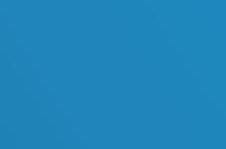







When it comes to delivering significant value for credit and financial players worldwide through AI-powered solutions that transform legacy practices and streamline operations, QUALCO is nothing less than a leader in the field.

Launched in Athens in 1998, the tech firm has been meeting the needs of leading banks, financial institutions and other high-profile organisations for a quarter of a century. Today, many of the company's original employees continue to apply their vast business expertise to the credit market — including founders Orestis Tsakalotos and Miltos Georgantzis.
QUALCO, the technology arm of QUALCO Group , has a team of well-established professionals who leverage the latest tools and technologies to develop and implement solutions for clients in the credit risk space and beyond.
One of those responsible for looking after this side of the business is Terry Franklin, Executive Vice President for Products and Markets. QUALCO’s primary function, Franklin explains, is to deliver value for clients in what is a rapidly evolving sector.
“What we’re really focused on is delivering leading technology solutions to a range of industries that help within the credit tech space, and beyond,” he says. “Ultimately, we're here to deliver value for our clients.
TITLE: EXECUTIVE VICE PRESIDENT, PRODUCTS AND MARKETS


INDUSTRY: SOFTWARE DEVELOPMENT



LOCATION: UNITED KINGDOM
Terry Franklin is the Executive Vice President, Products and Markets at QUALCO. Franklin joined QUALCO in 2020, having spent the previous 20 years of his career in credit management, collections and debt recovery across various industries.

Franklin’s current role is to oversee the operations of QUALCO Technology, ensuring its personnel deliver marketleading credit risk and collection tools.






“We’ve got clients and partners in more than 30 different countries; we help them to establish and deploy innovative technology solutions that enable them to optimise their credit management operations, make informed decisions and drive growth. We empower our clients to unlock value and transform their businesses through our operational platforms, data insights, digital experiences and industry expertise.
This helps our client partners fulfil critical business activities through automation, managing risk and supporting growth without increasing resources and costs. Typically, we're looking to give our clients a return on investment within 12 months.”
QUALCO offers a robust credit tech suite QUALCO provides several expert portfolio management tools, enabling businesses to adapt swiftly to market needs and maximise their performance in recoveries.







In the data-driven decision-making space, QUALCO Data Driven Decision Engine (D3E) helps clients at any stage in the customer journey – whether it be acquisition, customer management or collections – to combine data from various sources, analyse it and look for patterns of behaviour.
“By identifying those behaviour patterns,” adds Franklin, “using machine learning and AI, clients can deploy predictive models that determine the most appropriate way


“WE’RE REALLY FOCUSED ON DELIVERING LEADING TECHNOLOGY SOLUTIONS TO A RANGE OF INDUSTRIES THAT HELP WITHIN THE CREDIT SPACE”
TERRY FRANKLIN EXECUTIVE VICE PRESIDENT, PRODUCTS AND MARKETS, QUALCO
to engage customers. This allows them to unlock value at various stages of the credit risk journey.”
The company’s best-selling product on the market, the QUALCO Collections and Recoveries platform, is dedicated to the management of collecting and recovering any accounts receivable portfolio. The system manages cases from the predelinquency stage, aiding the identification of customers who are about to become delinquent and helping relevant businesses to interact with them accordingly, through to late-stage recoveries.
QUALCO Loan Manager, offers an efficient way to manage the loan administration process end-to-end across the loan servicing lifecycle. Loan origination journeys can be simplified using QUALCO’s business

process management tooling, which pulls data from various sources to verify fraud risk and affordability assessments, allowing clients to sanction loan changes quickly and seamlessly.
It's digital banking solution, QUALCO Scalefin, supports financial institutions in their digital transformation journey, enabling them to enhance their digital capabilities and achieve strategic goals quickly and efficiently. This leads to streamlined operations, improved customer experience and business growth.
Tech solutions are also offered in the Supply Chain Finance area, underpinning the entire journey. QUALCO ProximaPlus and QUALCO Kyberas allow buyers and sellers to establish innovative ways of financing the supply chain and manage the dynamic discounting process, which, in turn, improves cash flow and helps their businesses to grow rapidly.

Moreover, QUALCO offers a complete suite of customised and secure enterpriselevel IT solutions and services, utilising advanced digital and cloud technologies.
QUALCO IT Services reshape businesses’ IT infrastructure, ensuring cyber security and peace of mind, enhancing operational efficiency and driving business growth.

The growing importance of data to businesses as they look to grow, transform and thrive is well-documented – and the same can be said of QUALCO’s clients. Data and the application of analytics is used to establish actionable insight and achieve better outcomes.
Franklin points to data from customer interactions as being highly valuable. This
“WHAT’S VERY IMPORTANT IS FINDING A PARTNER THAT OFFERS HUGE VALUE TO THE END CUSTOMER, UNDERSTANDING HOW WE CAN INTEGRATE WITH OUR OWN TECHNOLOGY STACK AND MAKE IT A REALISTIC, DAY-TODAY, USABLE PIECE OF FUNCTIONALITY”
TERRY FRANKLIN EXECUTIVE VICE PRESIDENT, PRODUCTS AND MARKETS, QUALCO
may include the channel customers prefer to use, the time of day they are most likely to communicate or the probability of them rolling from one state of delinquency to another.

He says: “By combining those pieces of analysis through a system like QUALCO Collections and Recoveries, you can coordinate the timing, messaging and channel you want to use to make that connection with the customer, increasing the success rate and achieving a desired outcome more efficiently.”
QUALCO Data-Driven Decisions Engine (D3E) enables this practice, ingesting data quickly, applying analytics and capturing snapshots over time to create new variables to quickly and systematically build predictive models. For example, it might assess how often a customer has been delinquent in a fixed timeframe and automatically generate new characteristics that can be deployed in future models. These characteristics will be evident in an explainable model, allowing businesses to articulate why certain decisions were made.
“WE WANT TO MAKE SURE WE CAN ACCURATELY PREDICT CUSTOMER CIRCUMSTANCES AND PREFERENCES AND THEN USE THAT KNOWLEDGE TO BUILD BETTER SOLUTIONS THAT ENGAGE THE CUSTOMERS”
TERRY FRANKLIN EXECUTIVE VICE PRESIDENT, PRODUCTS AND MARKETS, QUALCO
“The good thing about D3E is it does all the analytical processing itself, so you don't need an army of analysts to do the work,” adds Franklin.
Data also has its place in the supply chain finance side of QUALCO’s offering. Embedded machine learning and AI is used to look at unusual behaviour patterns within the trade receivables, flagging any trades that could represent a fraud risk to businesses or lenders.

Dedicated to thoroughly understanding its client’s needs and conducting complete business assessments, QUALCO prides itself on creating and delivering value for clients, employees, business communities and the wider society. This is made possible via tailor-made solutions that meet business needs and ensure the organisations' competitive advantage in their respective markets.
“There are areas of improvement that relate specifically to technology,” explains Franklin, “but during our engagements there may be other areas where clients can make some improvements that aren't necessarily related directly to our tech. We’ll share those recommendations because it builds trust, and our clients can see we’re here to help, strengthening the overall relationship and partnership.”
Once comparisons and recommendations have been made, QUALCO effectively produces a transformational plan. Clients can challenge any suggestions and ensure all elements ring true before the plan is inspected with a fine-tooth comb and approved at the board level. The goal is to set out in detail why this is an investment worth making.
“If you can benefit as many individuals as possible, you're also benefiting communities,” adds Franklin. “And, if we provide solutions that allow investors to make sensible decisions from an ESG perspective, it generally helps the wider society. We see this as an important overarching ethos for our solutions.”
To deliver its highly-valued services, QUALCO cannot go alone; instead, it requires a quality ecosystem of partner organisations.
Clearly, ESG has become a massive topic of discussion at organisations of all sizes in recent years. QUALCO has been working hard to support banking and finance clients in achieving their ESG goals, particularly in the supply chain finance space.

“We can help them understand where they can choose a factoring or invoice discounting market in the relative industries,” says Franklin. “By investing to discount or factor in particular industry sectors, they can demonstrate a greater commitment to supporting ESG and a greater level of corporate responsibility.”
Another essential solution – one falling into the governance bracket – is end-to-end visibility. QUALCO’s supply chain finance tech achieves full transparency from the supply point to the end-delivery point.
Franklin adds: “Anybody in the trade finance space will have full governance and full visibility of what happens at the point of a sale as well as the point of selling final products into the marketplace.”
Over the last 12 months, the business set up a partners-and-alliances function to identify and onboard sales, technology and delivery partners and make the vision a reality. Technology partners become incumbent elements of the QUALCO ecosystem that is delivered to clients.
“On the sales partner front,” says Franklin, “we’re really interested in working with organisations that are out discussing with clients how to improve and drive efficiencies, and then they would introduce us as a component part to deliver those business benefits and cost savings.”
Franklin also states the importance of partnering with effective technology players to engage customer communications and automate management tasks throughout the credit risk, collections and recovery journey.
“What’s very important is finding a partner that offers huge value to the end customer, understanding how we can integrate with our own technology stack and make it a realistic, day-to-day, usable piece of functionality,” he explains.
In the digital portal space, QUALCO works with tool providers that allow customers to fulfil their income and expenditure analysis and initiate payments or set up arrangements.

The road ahead
Franklin describes QUALCO’s growth plans for the next five years as “ambitious”. There’s a clear desire to build on the company’s already-strong reputation and become the go-to expert for client organisations.
He continues: “We’re creating a broader set of services because we want to be able to offer clients an end-to-end technology stack they can utilise as a whole or in component parts. And, over time, as clients witness the value we can unlock, they want to invest more of their resources in our solutions. It's essential for us to have demonstrable success stories.”

Another aim for QUALCO is to achieve success in different regions. The firm already has a broad footprint among clients with a presence across EMEA, but the plan is to ramp up its direct sales to organisations within new regional markets.
Unsurprisingly, Franklin says QUALCO’s growth strategy also outlines an intention to evolve its offerings, stay relevant and respond to the changing needs of clients adding: “Ultimately, the demands and needs of clients and their customers is what feeds into our product roadmaps, then our solution engagement models and then our go-to-market strategy.”
It also seems inevitable that AI and machine learning get a mention when looking ahead to the future, and Franklin sees this as an area that will continue to evolve at QUALCO.
“We want to make sure we can accurately predict customer circumstances and preferences and use that knowledge to build technology solutions that better engage customers, creating that one-toone feeling,” he says. “By better serving our clients’ customers in the manner that they prefer, we build enduring solutions that will deliver value for many years to come.”

“IF YOU CAN BENEFIT AS MANY INDIVIDUALS AS POSSIBLE, YOU ALSO BENEFIT COMMUNITIES”
Investment platforms provide a range of services, from complete portfolio management to zero fees and video tutorials for beginners
WRITTEN BY: JOANNA ENGLANDInvestment is a challenging space right now. But innovative fintech solutions are providing alternative pathways to wealth creation, despite the difficult environment. From platforms that offer social trading and customer support to commission-free service and international stock trading, variety in the marketplace is booming.




Founded in 2010 by Australian entrepreneurs Owen Kerr and Joe Davenport, the Melbourneheadquartered Pepperstone is an online forex and CFD broker that provides traders with access to a range of financial instruments, including currency pairs, commodities, cryptocurrencies, and indices, through its trading platforms.

The investment platform is regulated by multiple financial authorities, including the Australian Securities and Investments Commission (ASIC) and the Financial Conduct Authority (FCA) in the UK, and it operates in over 150 countries worldwide.

Launched in 2007 by brothers Yoni Assia and Ronen Assia together with David Ring, eToro is a social trading and multi-asset brokerage company that provides clients with access to a range of financial asset classes, including stocks, cryptocurrencies, commodities, and forex, through its proprietary trading platforms.
eToro’s is a social trading platform that enables traders to interact and share information with other traders from around the world. Users can follow and copy the trades of other successful traders, making it an attractive option for novices who want to learn from those more experienced than themselves.
Founded in 2019, PU Prime is owned and operated by Pacific Union, a Seychelles-based company regulated by the FSA of Seychelles. With a presence in 120 countries, the platform has grown into a world-leading online broker that offers more than 200 products. PU Prime delivers an innovative trading facility for assets such as forex, indices, commodities, shares, and cryptocurrencies.

As a service-focused online brokerage, the platform provides multilingual services to its customers, but also offers a series of tutorials that beginners can access to get trading tips to improve their first experience in the space.


Nutmeg Investment is a UK-based platform founded in 2011 –and its parent company is JP Morgan. Customers of Nutmeg have their investment portfolios constructed by industry experts and have access to a wide pool of investments.
The platform uses a mix of ETFs (exchange-traded funds), which offer a simple way to gain exposure to multiple investment options. Nutmeg then groups customer portfolios into a single investment, or a 'fund'. This helps manage risk and makes it much safer than investing directly in one or a few companies.




















































Launched by entrepreneur Vlad Tenev in 2015, Robinhood hit notoriety in 2021 when its members, buoyed up by Reddit forums, almost caused the collapse of Wall Street through their collective investment strategy involving GameStop shares.
Robinhood has also been credited with popularising the concept of fractional share investing, which allows traders to purchase a portion of a share, making it possible for even small investors to participate in the stock market.

The company has faced some criticism over its business model, which relies on selling order flow to market makers, but it has also been praised for its efforts to democratise investing and make it more accessible to a wider audience.










Founded by technology entrepreneur Viktor Prokopenya in 2016, Capital.com is a Cyprusregistered company that also has a strong presence in London, where its dual headquarters reside. Capital.com provides an investment platform for trading a range of financial instruments, including stocks, commodities, currencies, and cryptocurrencies.
Its AI-powered trading platform uses machine learning algorithms to analyse market data and provide personalised trading recommendations to its users. The platform is also user-friendly and easy to navigate, making it suitable for both novice and experienced traders.

Known for its straightforward and easy-to-use investing environment, Skilling was launched in 2016 by Scandinavian tech magnates Henrik Persson Ekdahl, André Lavold, and Mikael Riese Harstad. The premise was to make trading simple and accessible to everyone in a transparent and secure place.

One of the unique features of Skilling is its intuitive trading platform, which is designed to be user-friendly and easy to navigate. The platform is available as a webbased application and mobile app, allowing traders to access their accounts and trade on the go.
Launched in 2009 by founders Alon Gonen, Gal Haber, Elad BenIzhak, Omer Elazari, and Shlomi Weizmann, Plus500 is a platform that allows traders to buy and sell a range of financial instruments, including stocks, forex, commodities, cryptocurrencies, and indices.
One of the unique features of Plus500 is its simple and userfriendly trading platform, which is available as a web-based application and mobile app. The platform is designed to be easy to navigate, offering a range of tools and features to help traders make informed investment decisions.


Launched in 2013 by bankers Gijs Nagel, Jasper Anderluh, Niels Klok, and Stef Keetman, DEGIRO is a European online discount brokerage firm that was founded in 2008 and is based in Amsterdam, the Netherlands. The company offers access to a wide range of financial instruments, including stocks, bonds, ETFs, options, futures, and warrants.

One of the unique features of DEGIRO is its low-cost trading fees, which are
among the lowest in the industry. The platform also offers a user-friendly trading interface, making it easy for both novice and experienced investors to buy and sell securities.
Overall, the fintech is a reputable and low-cost online brokerage firm that offers a range of features and tools to help investors achieve their investment goals.






Launched by philanthropist and business mogul John C Bogle in 1975, Vanguard revolutionised the investment platform space by introducing the idea of investor ownership as a better way to manage mutual funds. Vanguard is owned by the funds that, in turn, are owned by the funds' shareholders.
Vanguard is a global investment management company that was founded in 1975 and is based in Malvern, Pennsylvania, US. The company is known for its lowcost index funds and exchange-traded funds (ETFs), which are designed to provide investors with broad market exposure at a low cost.
Vanguard manages a range of investment products, including mutual funds, ETFs, and separately managed accounts. The company offers a range of investment strategies, including index-based strategies, active management, and a combination of both.

One of the unique features of Vanguard is its client-owned structure, which means that the company is owned by its investors.

GmbH Peter Stockhammer understands the importance of partnerships to help develop the best possible products and services for their customers. These partnerships link both ends of the product chain, technical expertise from outside of the insurance industry to the feedback from the policy holder.
Generali Vitality is a wellness programme designed to encourage and reward the healthy behaviours of policyholders via the provision of tools and incentives to improve their overall health and wellbeing. Stockhammer has had a long career in the life insurance space, but says he has taken inspiration from all kinds of sectors to shape his attitude to industry transformation; what has chiefly guided him is considering what can be learnt from other industries.
He says: “I was once invited to Porsche and they showed me how they build cars. They showed me what they call the marriage of the chassis with the engine. I thought, ‘It’s fascinating how they’re doing this and what we can do in issuing the policy to give transparency to the customer, and can we improve things to be faster?’.”
It’s not just limited to learning from the technical expertise of other industries, but also in balancing that with the evolution for insurance provision, enabling it to become even more customer-centric and developing a deeper relationship with policyholders.
Stockhammer speaks of becoming a ‘lifetime partner’ with Generali’s customers, utilising their relationship with smartphones as the way to become part of their life and transition their insurance interactions from protection to prevention. A tipping point for him, personally, was seeing a survey where people were asked what they couldn’t live without; less than half listed their current partner, but 97% said this of their smartphone.
Generali Vitality is an exciting fusion: a historic player in the insurance space, they also develop trend-setting digital products to interact with their customer base.
As such, Generali Vitality offers a personalised approach to wellness by creating health goals and rewards based on a policyholder's current health status and lifestyle. Through the app, policyholders can earn points for engaging in healthy activities such as exercise, getting regular check-ups, and even shopping for healthy foods. The more someone engages with the program, the more points they collect, and the deeper the level of value to the rewards.
Stockhammer explains that their experience and research leads them to know how their policyholders like to use the app and the results they value the most, like the small, simple incentives.
“You have a weekly fitness activity or physical activity goal and, if you reach it, you will be immediately rewarded. There’s gamification, so there’s a wheel of fortune


where you’re getting a push notification that says, ‘Congratulations, we have achieved the goal, here is a reward for you’. You can then spin the wheel and randomly get one of the awards.”

It’s this attitude to gamification and continued product improvement that excites Stockhammer, as it helps welcome an insurance provider with more than 190 years of industry experience to the cutting edge of digital transformation. It also heralds a new relationship with their customers. With such modern digital tools, customers have regular contact with their product, rather than just an initial interaction before embarking on a distant relationship that’s only rekindled when a problem arises

“WE ARE SAYING WE ARE NOTICING AND REWARDING YOU AS YOU ARE CONSTANTLY DOING SOMETHING”
PETER STOCKHAMMER MANAGING DIRECTOR, GENERALI ENGAGEMENT SOLUTIONS GMBH
TITLE: MANAGING DIRECTOR
INDUSTRY: INSURANCE
LOCATION: GERMANY
Peter is Managing Director of Generali Engagement Solutions
GmbH since 2015, based in Munich. He has held executive positions in many international insurance companies throughout his career and has worked in the insurance industry for 30 years. Prior to that, he had been CEO Life of Zurich VersicherungsAktiengesellschaft in Austria since 2007. Prior to 2007, Peter held several management functions at the UNIQA Group and its predecessor companies.
According to Stockhammer, some of the individual feedback received can enlighten the development teams. It has the capacity to reveal how customers interact with and value the apps — as well as their rewards — on a day-to-day basis.


“For example, we had feedback from a lady saying her daughter is always pushing and asking ‘have you already achieved your weekly goal?’, which is because she wants to spin the wheel. So these are the things, this little nudge; it's not that you're getting a big prize, but it's this regular thing where we say we’re noticing and rewarding you as you’re constantly doing something.”

Garmin Health is enhancing the insurance landscape through the inclusion of wearable technology in the transition from traditional coverage to dynamic engagement and prevention.
If you’re interested in partnering with Garmin Health or simply learning more about what we are doing in the health space, please reach out to us!
 Jake O’Connor, Global Business Development Manager, Health B2B
Jake O’Connor, Global Business Development Manager, Health B2B

Garmin Health produces world class devices for corporate wellness programs, providing the best battery life and biometric sensor data in an ever-expanding industry. Founded in 2014, it has invested in connectivity solutions such as the Garmin Connect Health API and the Garmin Health SDKs to provide the maximum flexibility for partners to access this data. Combined with a global distribution network, Garmin Health offers a wide scope of services across several industries including Health Care, Insurance, Research and Clinical Trials, Gym and Fitness and Corporate Health Benefits.
How does Garmin Health operate in the insurance industry?
Garmin Health provides fully or partially subsidised devices and monetary incentives to insurance customers to encourage a healthy and active lifestyle, with the goal of engaging their members and reducing medical costs. Life and re-insurance companies use our wearable devices to stratify risk and improve their margins. Ultimately, we seek to find and relieve our customers' pain points through our comprehensive data-ecosystem that allows them
to share the data generated via our wearable sensor technology.
How do partners benefit from working with Garmin Health?
Whether it be customer acquisition, health promotion, risk assessment, or selective prevention control, we have access to thousands of partners to find the perfect solution. With the ability to bring wearable devices to customers anywhere around the globe, we are dedicated to helping you offer the best health solutions for your customers.

Where do you see the future of the insurance industry trending?
Wearable devices are playing an increasing role as insurers invest heavily in accurate risk assessment and underwriting procedures. Wearables can help detect health risks earlier and advise for quick and timely treatments. Insurers can also augment their traditional underwriting dataset with additional physiological endpoints, transitioning from a static underwriting process to a continuous, long-term assessment that provides the ability to engage and affect behaviours and outcomes.
For questions and more info, please feel free to contact me directly at jake.oconnor@garmin.com
at Garmin shares his industry insight.
This kind of customer relationship has been made possible thanks to the transformative technical tools now available to insurers in conjunction with the power of data, which allows insurers to provide a more personalised service.
Stockhammer believes that progress is causing a fundamental change in the level of service an insurer can provide to their life customers, going from a passive observer to being part of them making positive life changes.
“It pushes us towards a customer-focused approach, this ongoing communication, as we’re getting immediate feedback from the customers. This is helpful for us because we’re really having the voice of the customer immediately there.”
“IT PUSHES US TOWARDS A CUSTOMER-FOCUSED APPROACH WITH THIS ONGOING COMMUNICATION AS WE ARE GETTING IMMEDIATE FEEDBACK FROM THE CUSTOMERS”
PETER STOCKHAMMER MANAGING DIRECTOR, GENERALI ENGAGEMENT SOLUTIONS GMBH
Stockhammer believes it’s crucial for players in the in sector to take not only feedback from their customers, but to align that feedback with the expertise of their technical partners. One of the key technical relationships Generali have is with Garmin.
Garmin was founded in 1989 by Gary Burrell and Min Kao, initially focused on developing GPS devices for aviation and marine use. The company later expanded to include products for outdoor, fitness, and automotive markets. It made them one of the leading exponents of exploiting GPS technology in a consumer market place, and they have continued to develop cutting-edge technologies since, such as GPS-enabled smartwatches and cycling computers.
As Stockhammer explains, it’s crucial for deployment in the overall digital transformation of insurance to leverage this kind of expertise — to the benefit of not just the consumer, but the insurance industry trying to develop smarter relationships with their clients.

He says: “It’s a regular exchange — what can we do together next? What’s the development? How can Garmin help us? How can we help Garmin? What feedback are we getting from a customer? What’s good, what’s not good? What are they looking for? So it really is a partnership.”
Just as the feedback from policyholders can provide a different perspective, Stockhammer is adamant that being open to, and embracing, technical advances can keep Generali Engagement Solutions

products at the forefront of the industry. He believes that the change in perspective through these partnerships can challenge the established ways of doing things, pushing boundaries that previously wouldn’t have been considered.
“My main principle is to get input from other industries. It is always good to get some input and some ideas from the outside. When you are permanently working on a single piece, you have a deep expertise, but bringing in some expertise from a different, outside point of view is always super helpful.”
Data is crucial to all insurance companies, because it allows them to assess risks accurately, set premiums, and make informed decisions. By using the data to analyse customer behaviour, claims history, and market trends, improvements to customer experience can be made while also increasing profits and reducing losses. Protecting customer data is, however, of vital importance for insurance companies in: maintaining trust with their customers; preventing data breaches and associated legal and financial liabilities; and complying with data protection regulations.
With the increased flow of information from a customer regularly interacting with products like Generali Vitality, Stockhammer is conscious of just how precious that data is. It not only helps the provider deliver a better customer experience and product, but it is the cornerstone of trust between the customer and the provider.


“I think that it is important and we are showing they are confident we are not misusing this data and always telling the customer you are in control in the programme there are several places where they can engage.”
He also states how vital it is that the industry makes sure the customer feels empowered in knowing how to make changes to the use of their data and ensuring there’s a transparent relationship with their insurer.
“For each single piece, you decide what you’d like to share and give your consent. You can revoke it at any time, and if you revoke it, the data sharing is immediately stopped. The important thing is to give the customer control over their data.”
With the flow of information, expertise, and feedback between technical partners, insurer, and customer, Stockhammer is mindful that it is only possible to continue to deliver the best product by challenging any potential boundaries. He believes that, if any company embracing this kind of customerfacing technology gets too comfortable with


“MY MAIN PRINCIPLE IS TO GET INPUT FROM OTHER INDUSTRIES. IT IS ALWAYS GOOD TO GET SOME INPUT AND SOME IDEAS FROM THE OUTSIDE”
PETER STOCKHAMMER MANAGING DIRECTOR, GENERALI ENGAGEMENT SOLUTIONS GMBH


the speed of their progress, they’re at risk of losing their advantage.

“If you're thinking you have an advantage, bear in mind you don't know what others are preparing in the kitchen. Is there something that will overtake you? Immediately after the game is just before the next game, otherwise others will overtake you.”
With so many providers working to improve on the customer experience and expand the reach of this technology, Stockhammer says Generali uses the competition that inevitably arises between insurers as motivation to never rest on any progress made and instead use it to fuel their next industry-leading development. He believes that working closely with both their technical partners for expertise and their customers for insight, they can continue the evolution of insurance from just simple protection to enhanced prevention.
“We shouldn’t be so arrogant in saying we are the brains for working on such a proposition, because I have respect for others that are working on similar products. So it’s always the thing pushing us permanently to the next limit.”

“I THINK THE IMPORTANT THING IS TO GIVE THE CUSTOMER CONTROL OVER THEIR DATA”
PETER
MANAGING DIRECTOR, GENERALI ENGAGEMENT SOLUTIONS GMBH


AD FEATURE
WRITTEN BY: MARCUS LAW

 PRODUCED BY: BEN MALTBY
PRODUCED BY: BEN MALTBY
With markets, behaviours and customer demands changing quickly, financial institutions need to act with speed. And with McKinsey predicting the pace of change in the banking industry will speed up significantly over the next few years, banks and lenders need a solution that helps them stay ahead of the curve.

Mambu is a SaaS, cloud-native, API-driven banking and financial services platform, designed to power financial innovation, bring solutions to market faster, drive down cost barriers and allow ecosystems to expand.
“I'm a firm believer that the core banking world is very niche,” explains Nick Lawler, Mambu’s Market Sales Director for UK&I.
“What we do, we cannot do as any one individual. And that's the same for any one business.
“No one person can deliver a transformational change to a bank or a building society or a financial institution. You need to look at the wider ecosystem. That's my role, pulling it all together, and that's essentially what Mambu does as well.”
Founded in 2011, today Mambu’s customer list includes fintech start-ups, telcos and top-tier banks, operating on six continents and helping customers constantly change the way financial institutions operate and innovate.
With the current turbulent economic times, Mambu’s SaaS solution is helping financial institutions act quickly, launching and scaling products at speed

As Lawler explains, offering a completely open architecture, Mambu is a different type of banking solution. “Some people back in the day, or even now, will choose to self-build a system in-house. But if you build a system in-house, you are reliant on those people that built it, retaining their skillsets and knowledge.
“For some people, a modular approach works. But there are other people out there who want to embrace this modern technology. And that's where we come in with composable banking.”
A term coined by Mambu, composable banking provides components that can be selected and assembled in various combinations to satisfy specific user requirements.

“WE SUPPORT LENDERS THROUGH ONE SINGLE CODE BASE. IT'S ONE PLATFORM GLOBALLY, IT'S SAAS”
NICK LAWLER MARKET DIRECTOR, MAMBU
“We do across-the-board current accounts,” Lawler explains. “And we support lenders through one single code base. It's one platform globally, it's SaaS. We regularly push new releases to make sure our clients are on the latest version. That's part of what we do.”


With the current turbulent economic times, financial institutions are having to act quickly, launching and scaling products at speed. As Lawler describes, Mambu provides financial institutions with the flexibility to build a product quickly, launch it to market, and test it, all in a true SaaS model.
“What we've seen is there's a big change in the market that works for both mortgages and savings,” he says. “The interest rate changes we've seen have meant mortgage rates have increased. So that means
TITLE: MARKET DIRECTOR
INDUSTRY: SOFTWARE DEVELOPMENT
LOCATION: UNITED KINGDOM
Nick Lawler is the Market Director for Mambu UK and Ireland. He has spent more than 20 years in the finance industry, working for brands such as NatWest, Merrill Lynch, Moneyfacts Group and Fiserv. With a focus area in business and technology development, he joined Mambu in 2021 to support the growth and adoption of SaaS banking technology in the UK.
NICK LAWLERmortgage lenders are pulling their products, they've got to launch new products quickly and put them to market.
“But on the flip side of that coin, rates are going up on deposits. They've been at historic lows, which now means people need to react quickly to the market. You've got to be competitive, otherwise your deposits are losing, and customers may leave your business and go to the next bank that is quicker to market with a better product.”
Changes like this in a legacy stack take time. “There might be lots of testing, you might have to go back to your vendor, and it can take weeks.
“In the market, weeks is a long time,” Lawler explains. “Suddenly either you haven't had the mortgage product you want on the market and you've been selling at a lower
rate, or your savings rate is paying too little, which means people are going to your competitors."
With the global lending market expected to reach US$8.9tn in 2025, and US$11.6tn in 2030, flexibility is key for businesses looking to enter or expand in the personal and business lending spaces.

“What Mambu is doing is allowing financial institutions to have the flexibility to build a product quickly, launch it to market, and test it in this SaaS model,” Lawler comments. “Mambu is a configurable solution. If you had a bank that is wanting to have freedom in their choices of how they serve their customers to work with their own originations partner or build in-house or do their own use flows on digital banking, Mambu supports that.

“Whether it be a mortgage application or a deposit application, we can support that, power it, we can take the relevant customer fields in,” he says. “We allow our customers to basically be their own institution, support their own needs, but powered by a global solution.”
As Lawler explains, ultimately the goal for Mambu is to give power to its customers. “A customer will have the same solution in Brazil that they will in the UK or in Australia. But each of those customers will be using that solution in a slightly different way and then putting orchestration and configuration around it for the way they want to work.
“What we give them is that freedom. From a mortgage perspective, they might be tied into legacy stacks with big change requests,
and delays in product changes. We remove that for them, we allow them to update products quickly, and plug-and-play with the partners they choose.”

With its cloud-native platform, Mambu allows financial institutions to constantly improve and be nimble and ready for change as it happens.
“From a deposit angle, rates move quickly,” Lawler explains. “And it works both ways. You might find yourself at the top of the best-buy table. Perhaps you don't want to be number one, in which case you can pull the product, and put a new one on market. Or perhaps you want to be number one because you want to do something on your lending line or to launch an aggressive product. We're there to support it all the way through.”

Recent news about crises in the financial sector, from the collapse of Silicon Valley Bank to the bailout of Credit Suisse, has highlighted the turbulent economic environment in which we inhabit. As Lawler explains, the UK and Ireland are at the forefront of banking and technology. “We are a heavily-regulated, stable environment,” he comments. “We saw what happened with Silicon Valley Bank, they had a situation that would not have been allowed in the UK. ”
From a Mambu perspective, numerous financial institutions have chosen its platform to help them bring solutions to market faster, drive down cost barriers and allow ecosystems to expand.
“FOR SOME PEOPLE, A MODULAR APPROACH WORKS. BUT THERE ARE OTHER PEOPLE OUT THERE WHO WANT TO EMBRACE THIS MODERN TECHNOLOGY. AND THAT'S WHERE WE COME IN”
NICK LAWLER MARKET DIRECTOR, MAMBU


“We have seen a wave of new entrants, and we have powered the bulk of those,” Lawler says. Since the wave of new players in the market, the number of new banks has slowed in the UK as the market changes. “But from a Mambu perspective, we signed 48 new logos, and any core vendor globally would be chomping at the bit to get that traction,” Lawler adds.
As the launch of the new banks has slowed, Mambu is looking at innovating with new solutions in the brownfield space.
“We are now stepping up and working, not just with greenfield projects, new entrants,” Lawler explains. “We are also moving into the brownfield, true transformational migration plays in the UK, which tend to be riskier.
“People are seeing the strength in the Mambu solution. We are helping to move large financial institutions away from legacy technology stacks, and people are seeing the benefits and they have belief in it.
“We haven't just rebadged something. We are a true modern stack,” he says. “We are going to continue growing within the region.
We're going to continue maturing the solution, and the people around us, growing as a business, which is an exciting step for Mambu.”
With financial institutions looking to modernise, a lot of it comes down to cultural change within the business. “You will have people who've worked in a bank for 10 or 20 years who will have never been through this process,” Lawler explains. “They've only worked on one system and that system is all they know. People will be nervous from the board level to the grassroots.
“That's where we come in. We support that. And we'll continue to do that over the next year and beyond.
“We are not just a vendor, we are a partner. From Customer Success and Customer Value to Partnerships, we continue to stay with our customers and work with them and make sure we're doing the best for them.”
“IN THE MARKET, WEEKS IS A LONG TIME. SUDDENLY EITHER YOU HAVEN'T HAD THE MORTGAGE PRODUCT YOU WANT ON MARKET AND YOU'VE BEEN SELLING AT A LOWER RATE”
NICK LAWLER MARKET DIRECTOR, MAMBU


















































